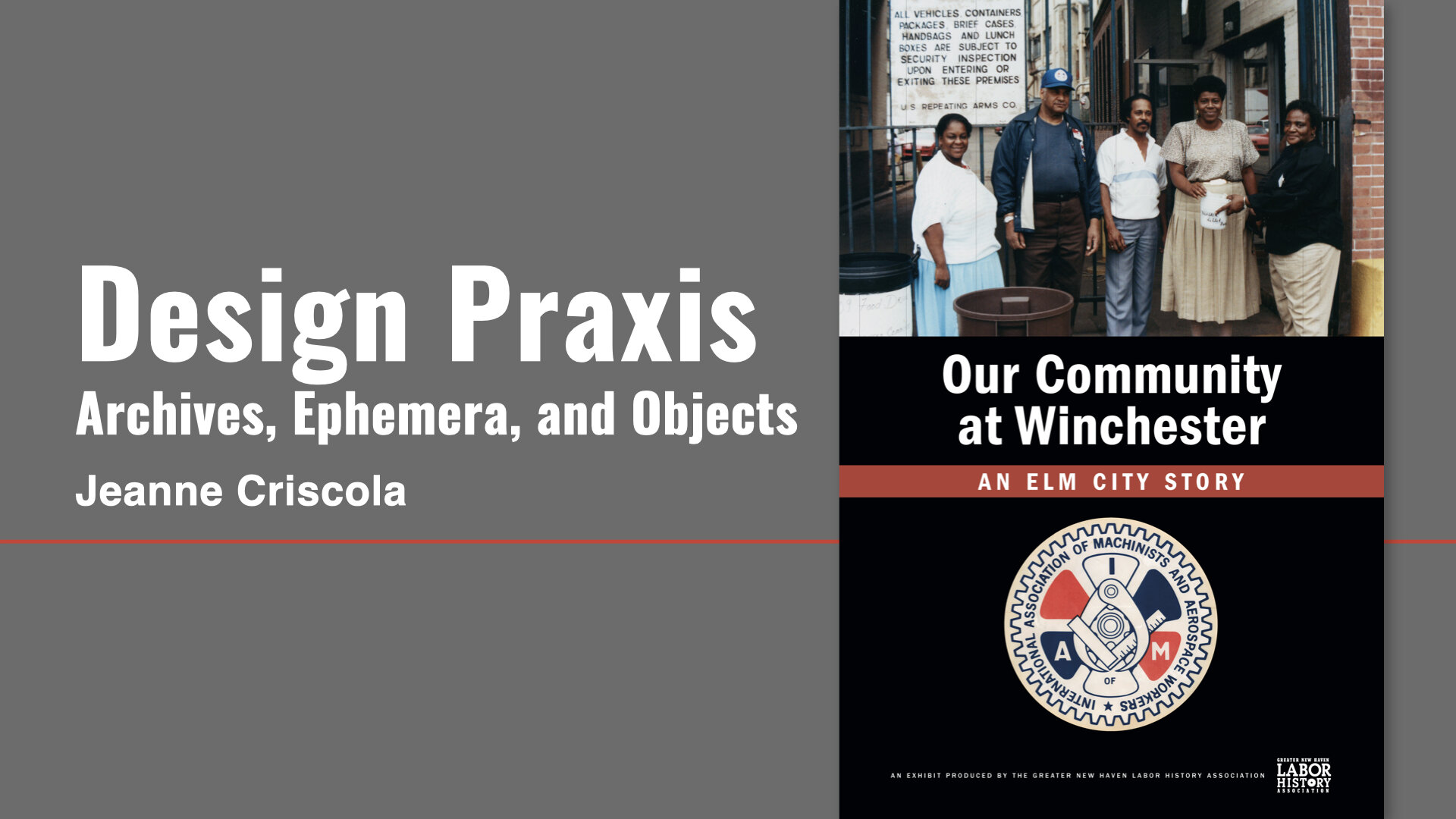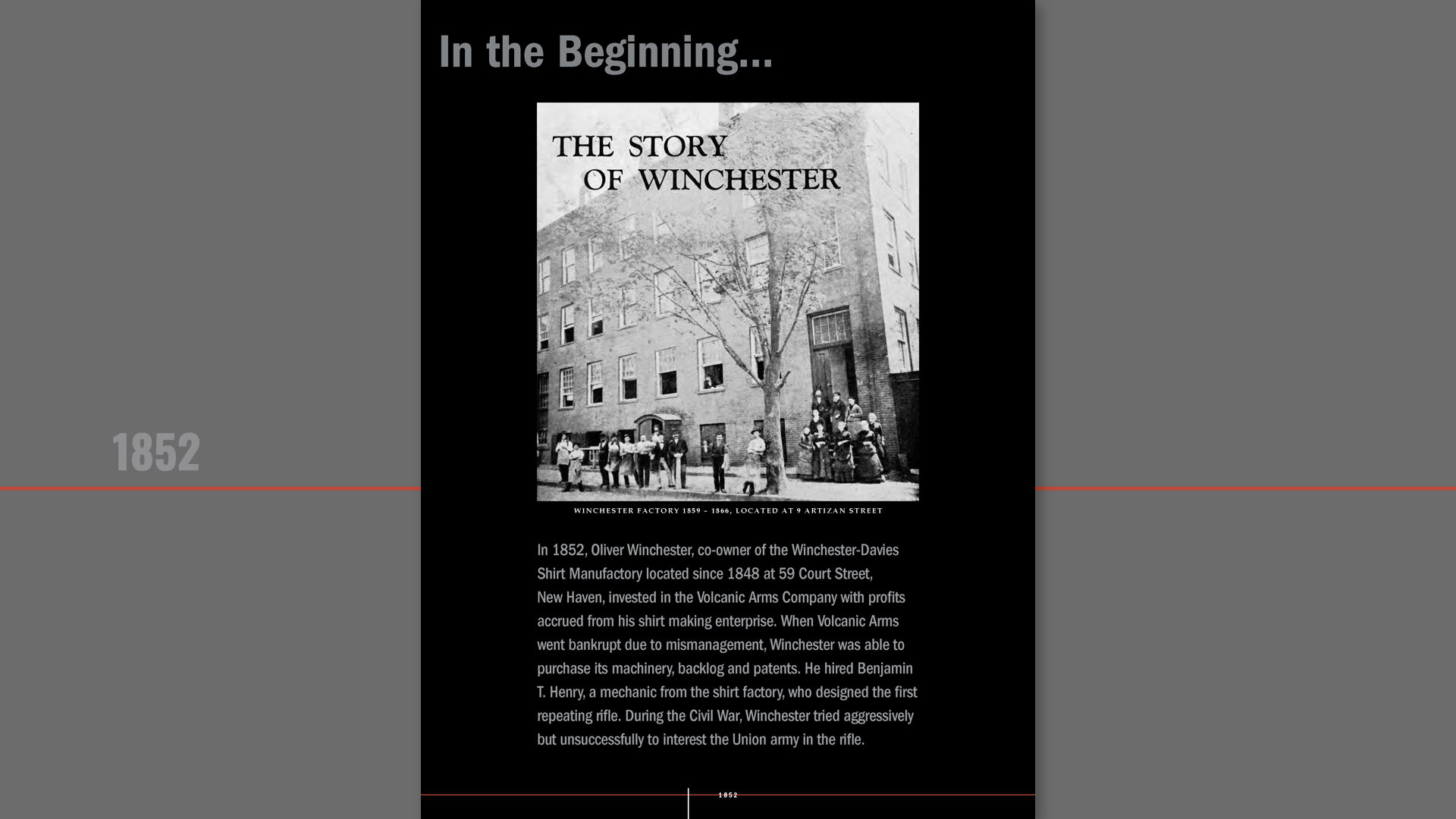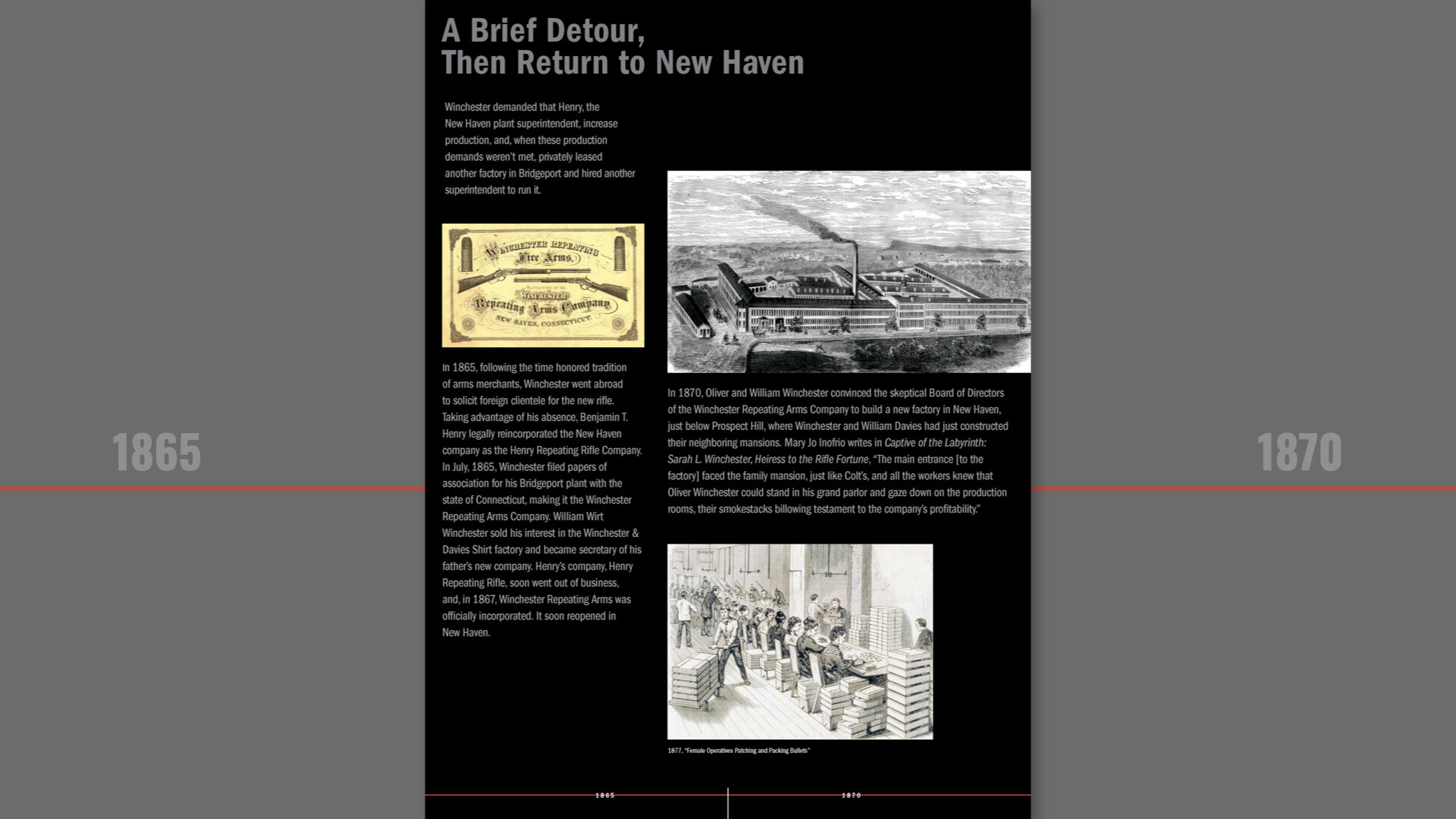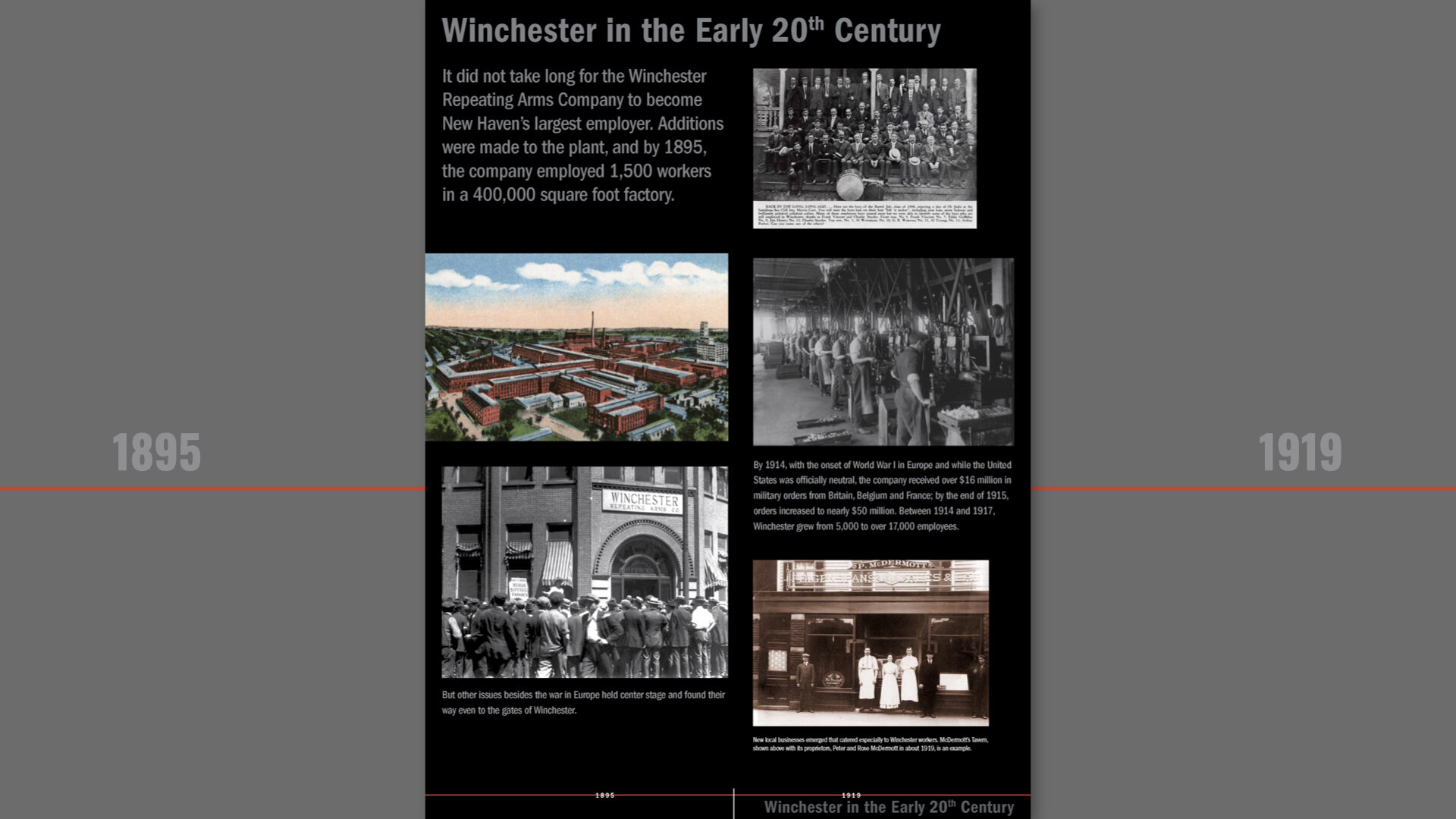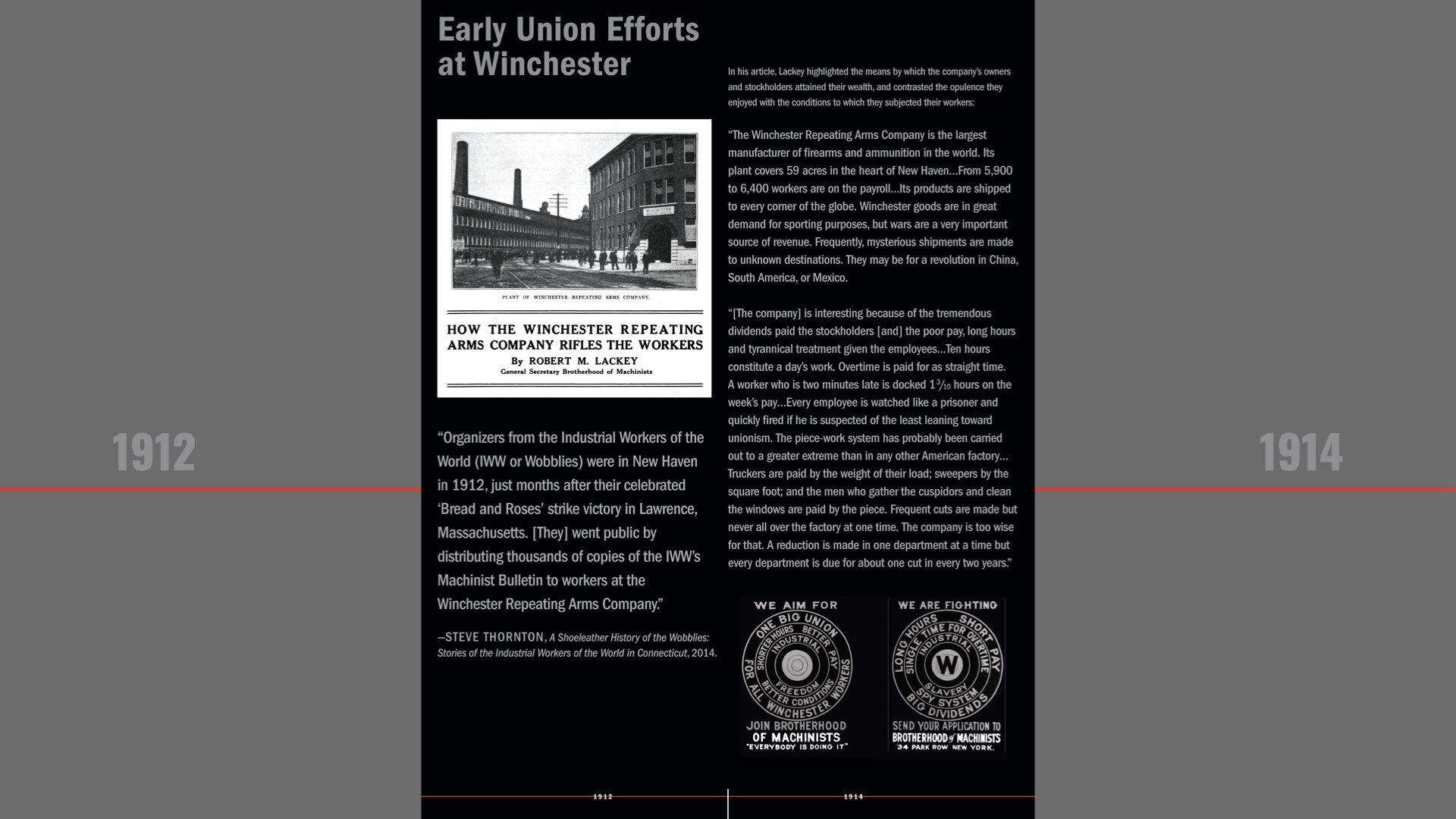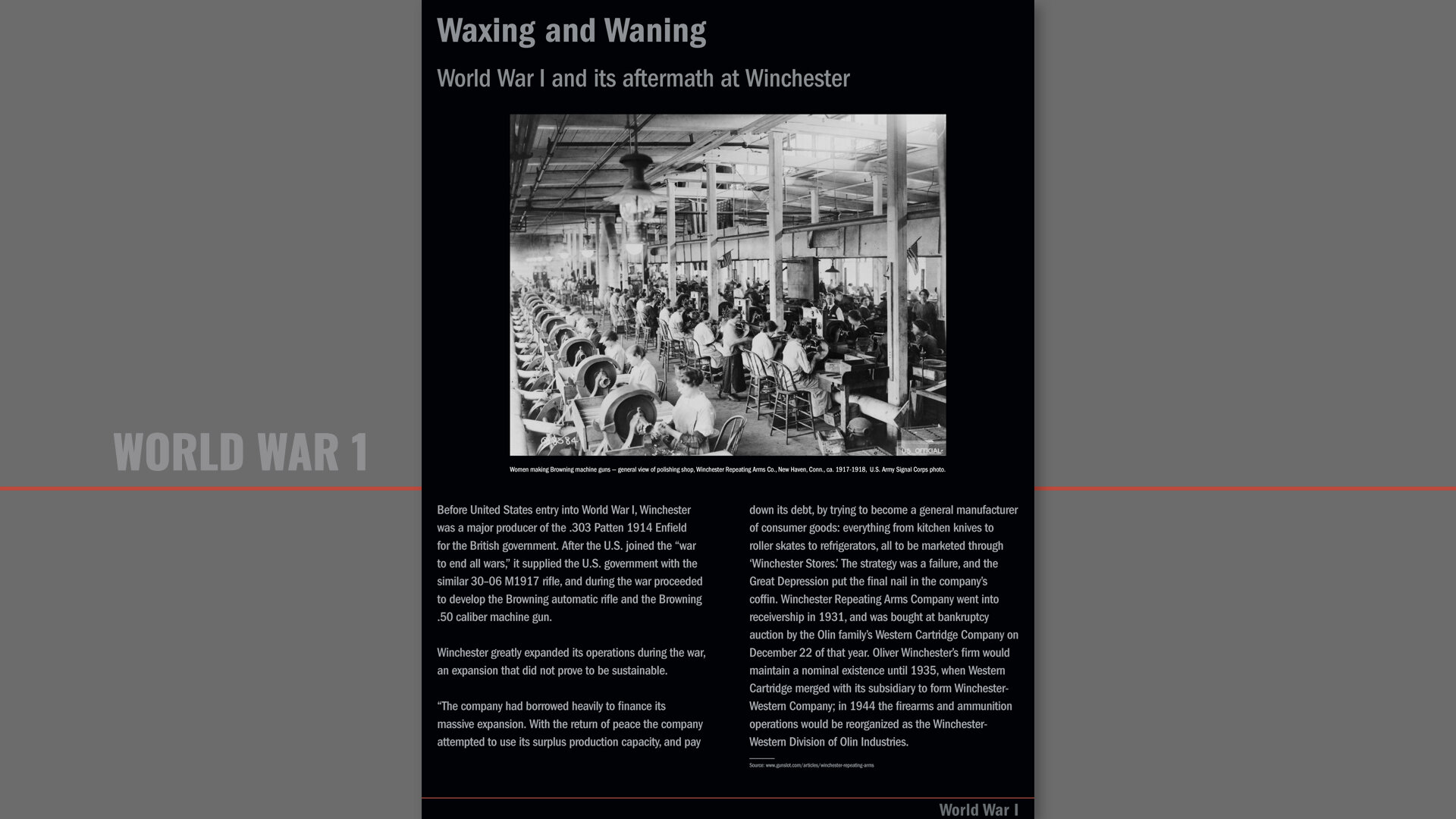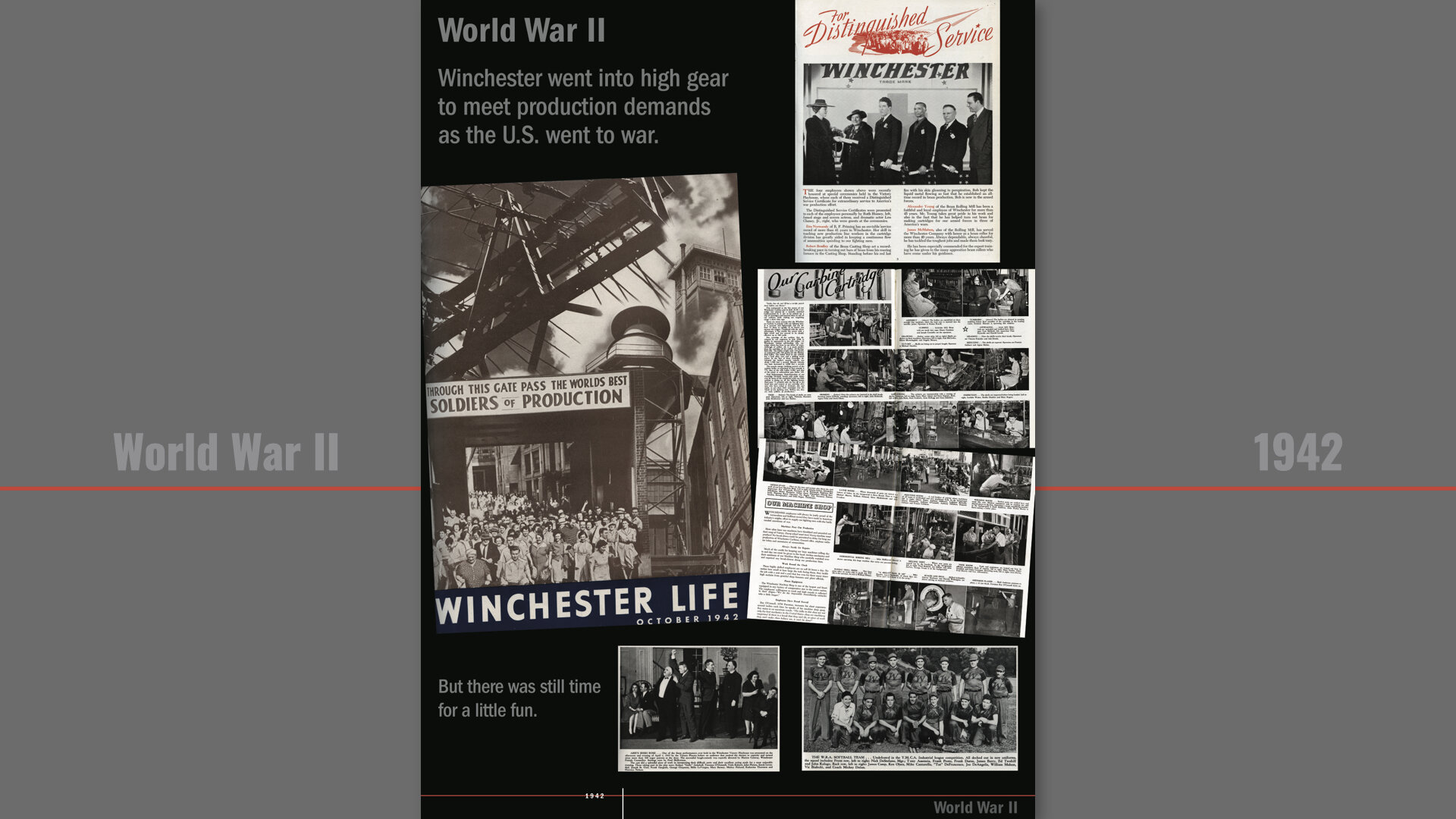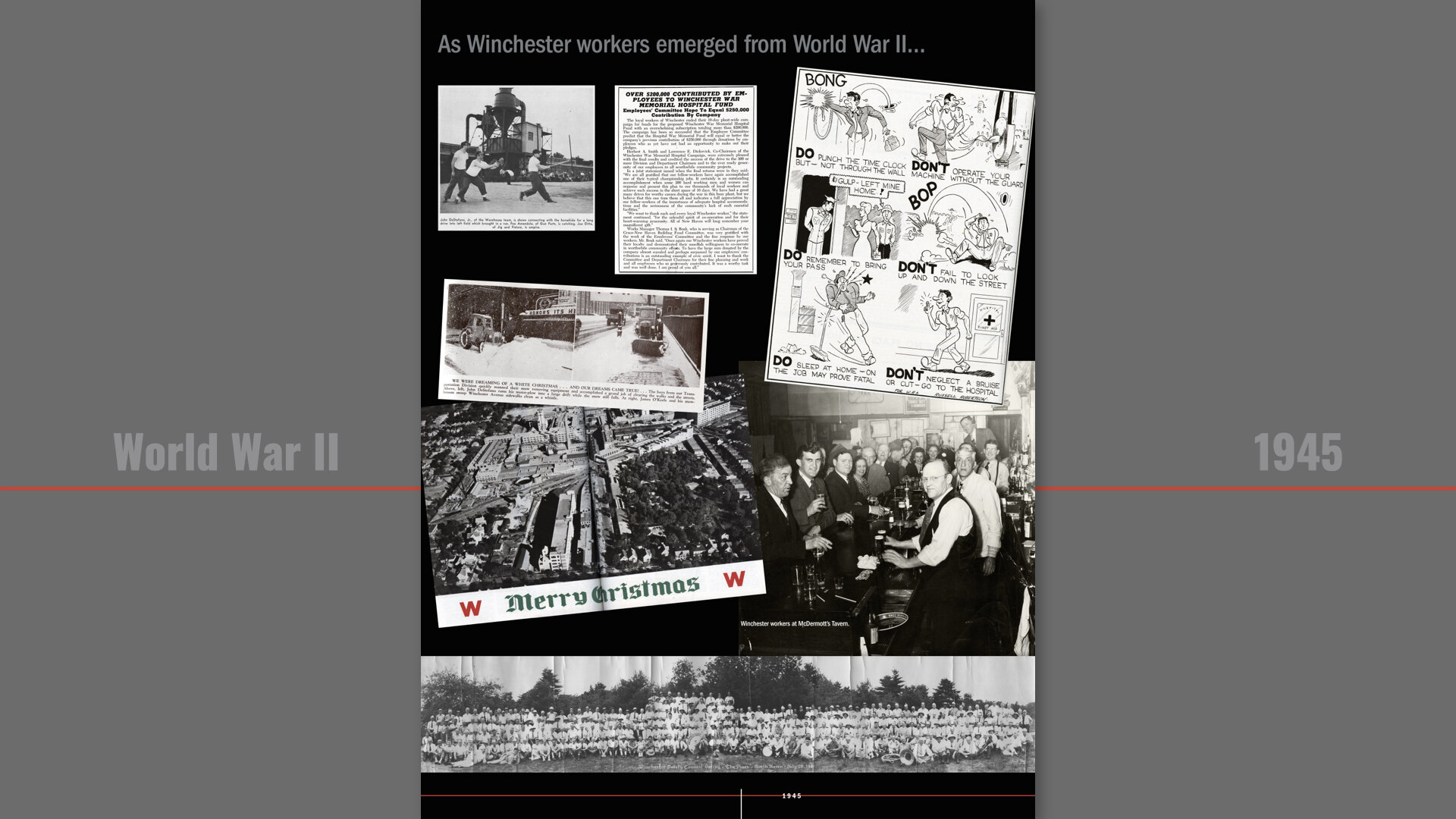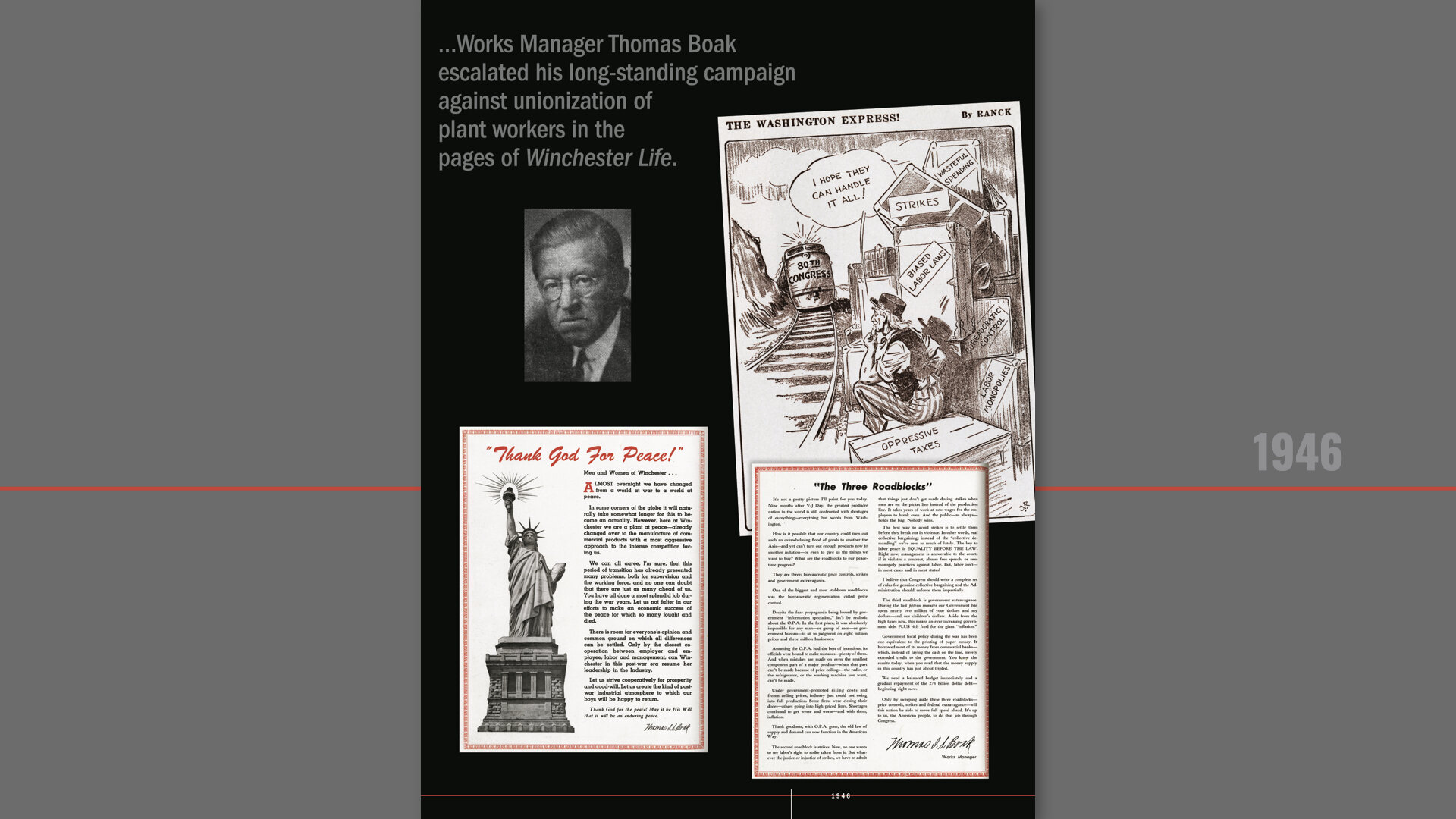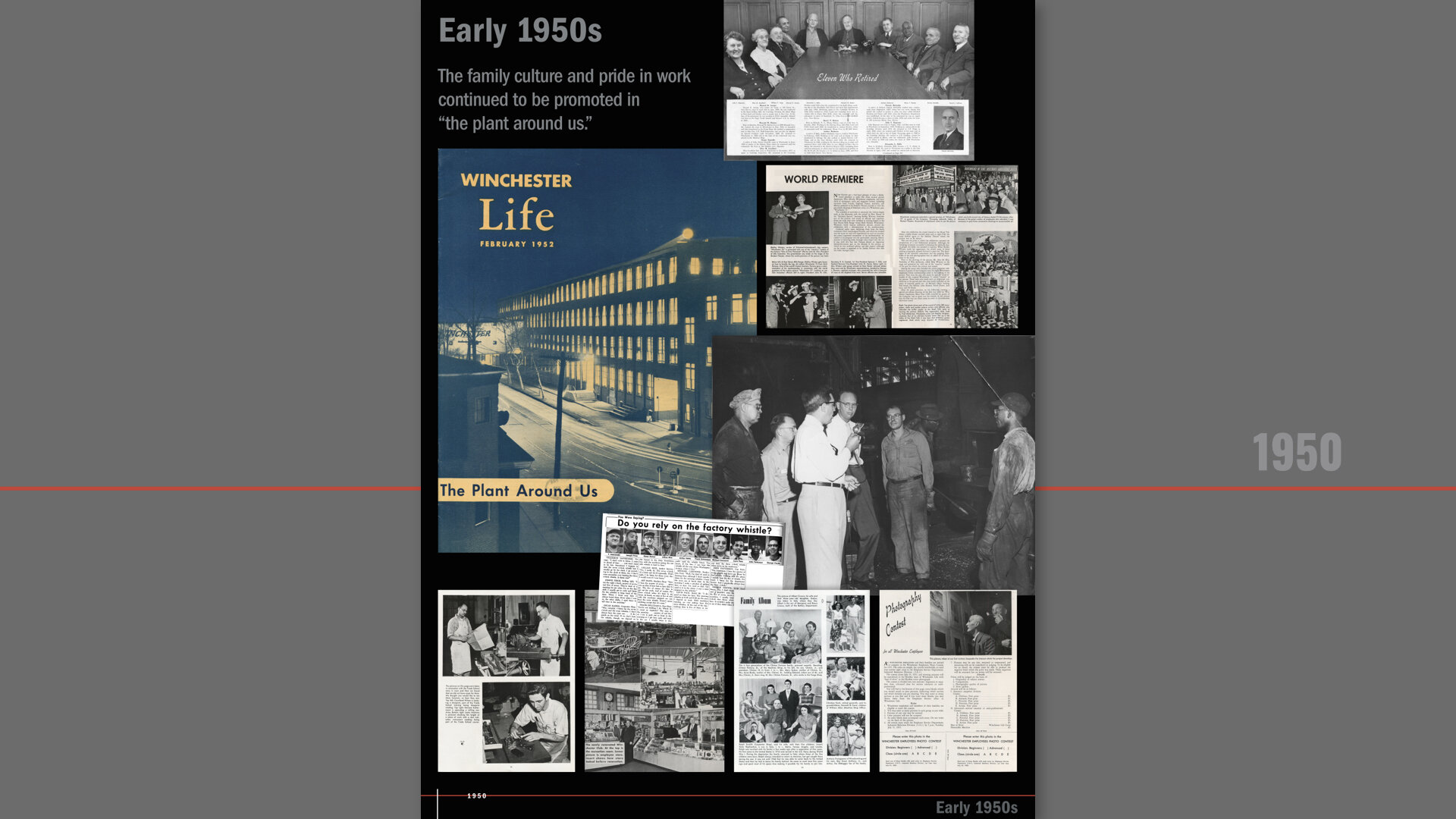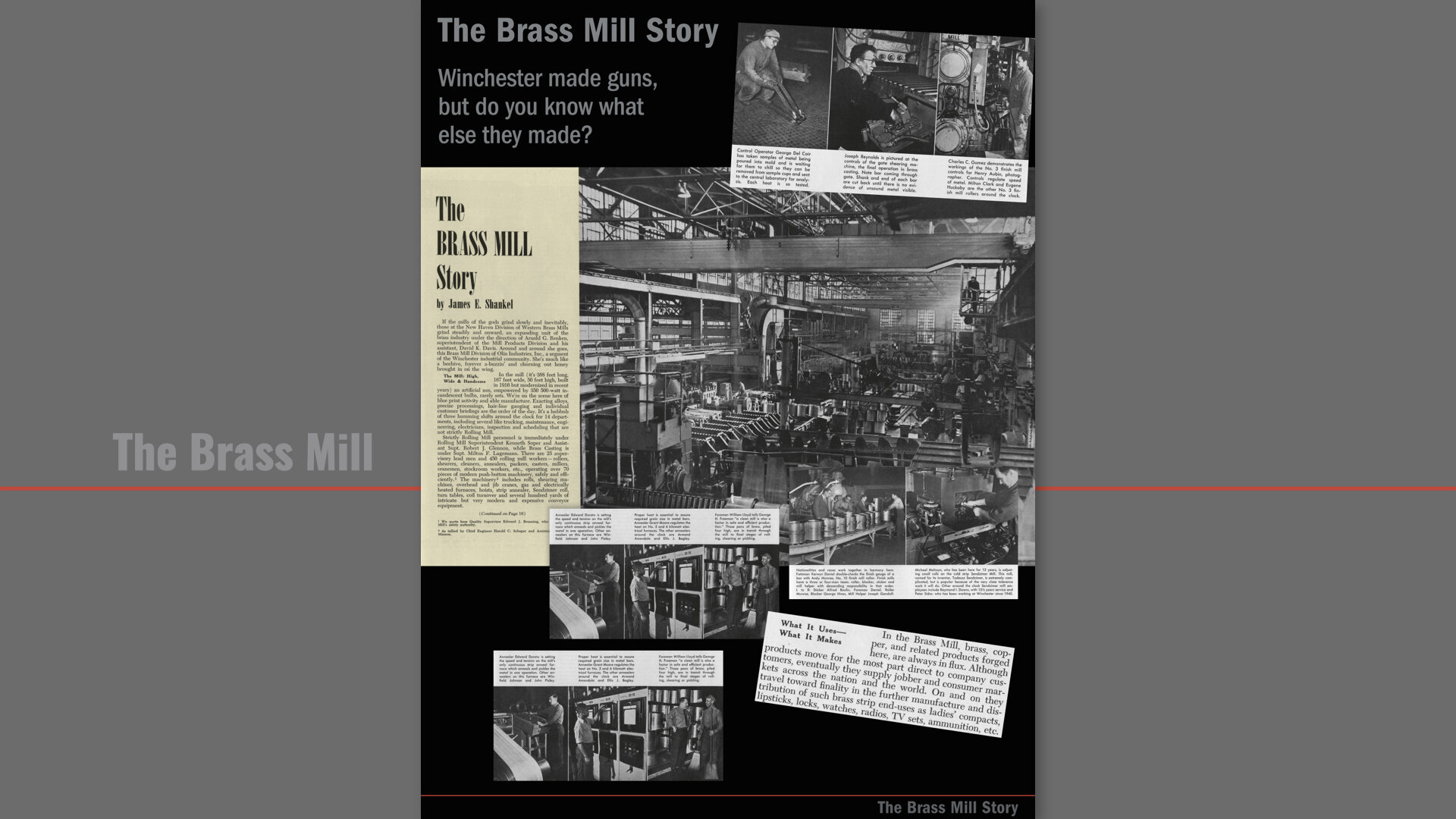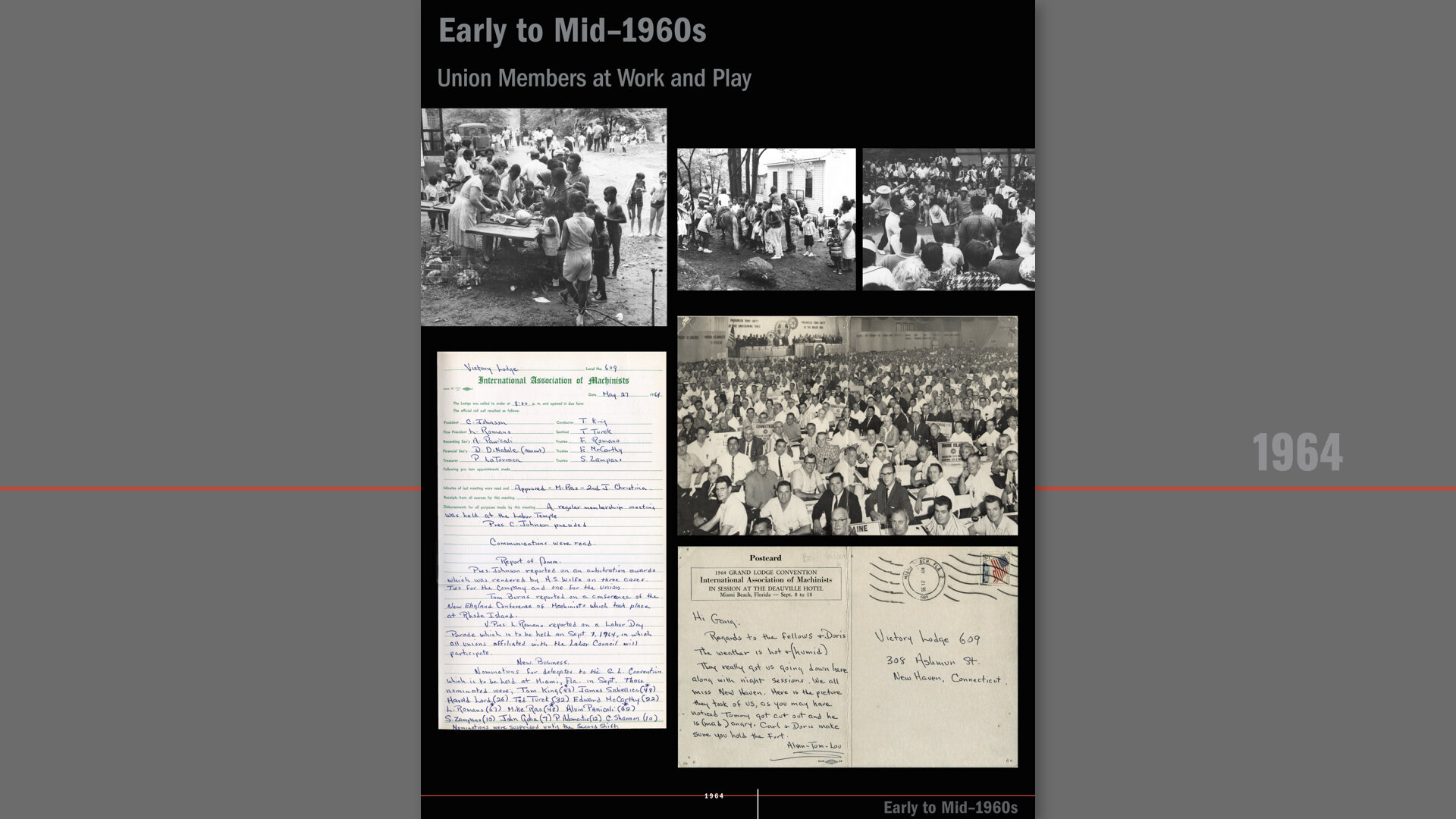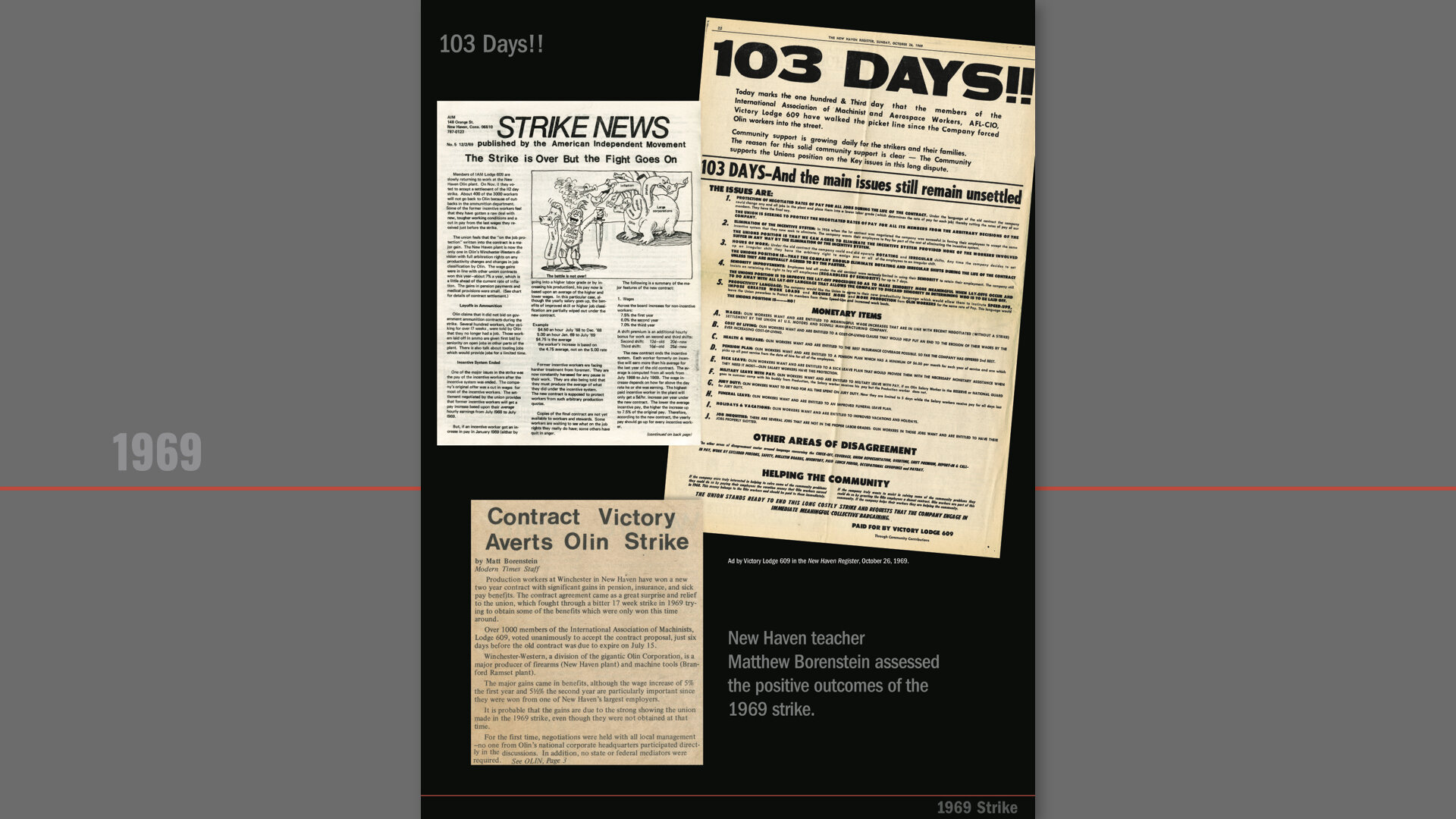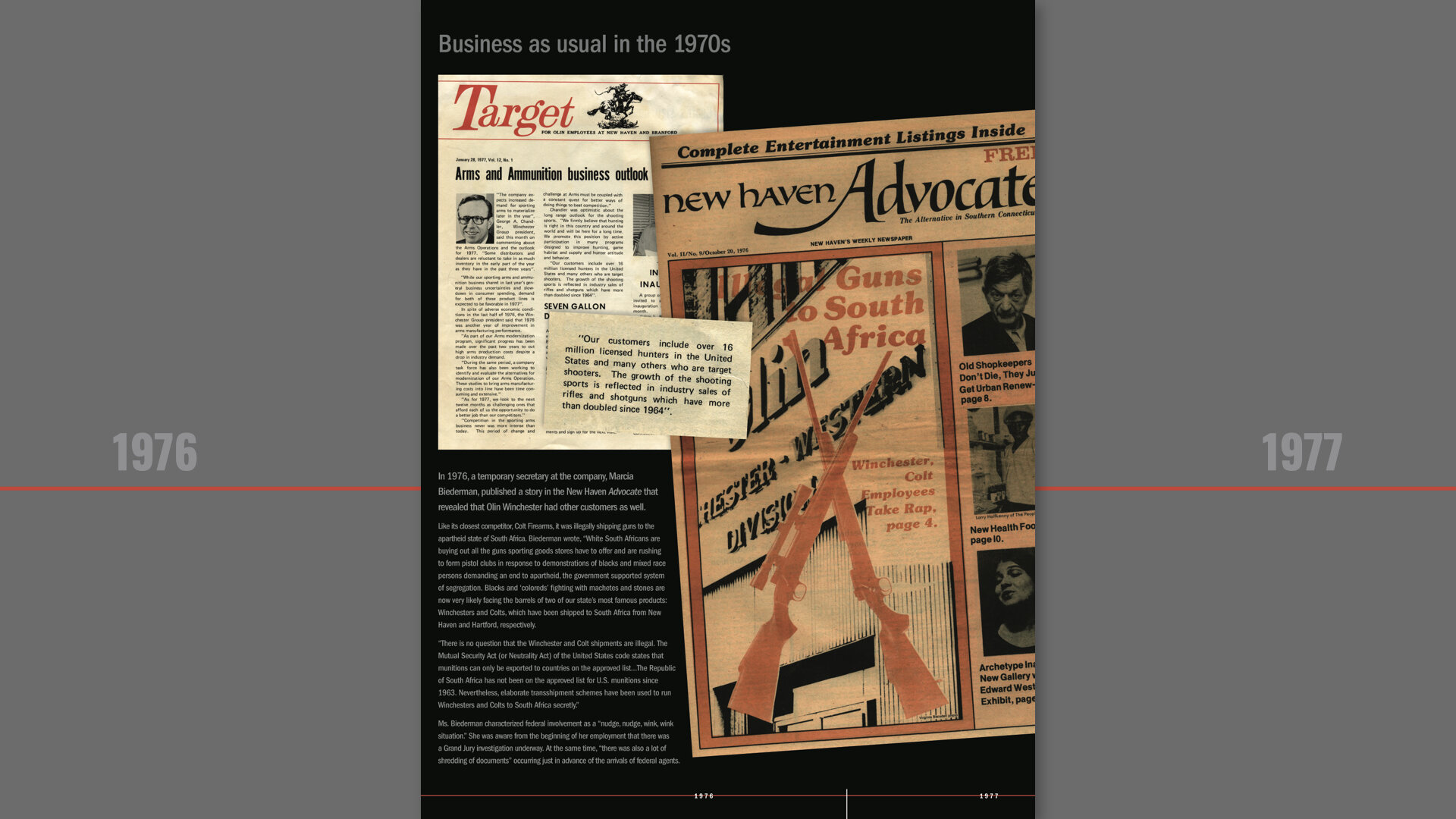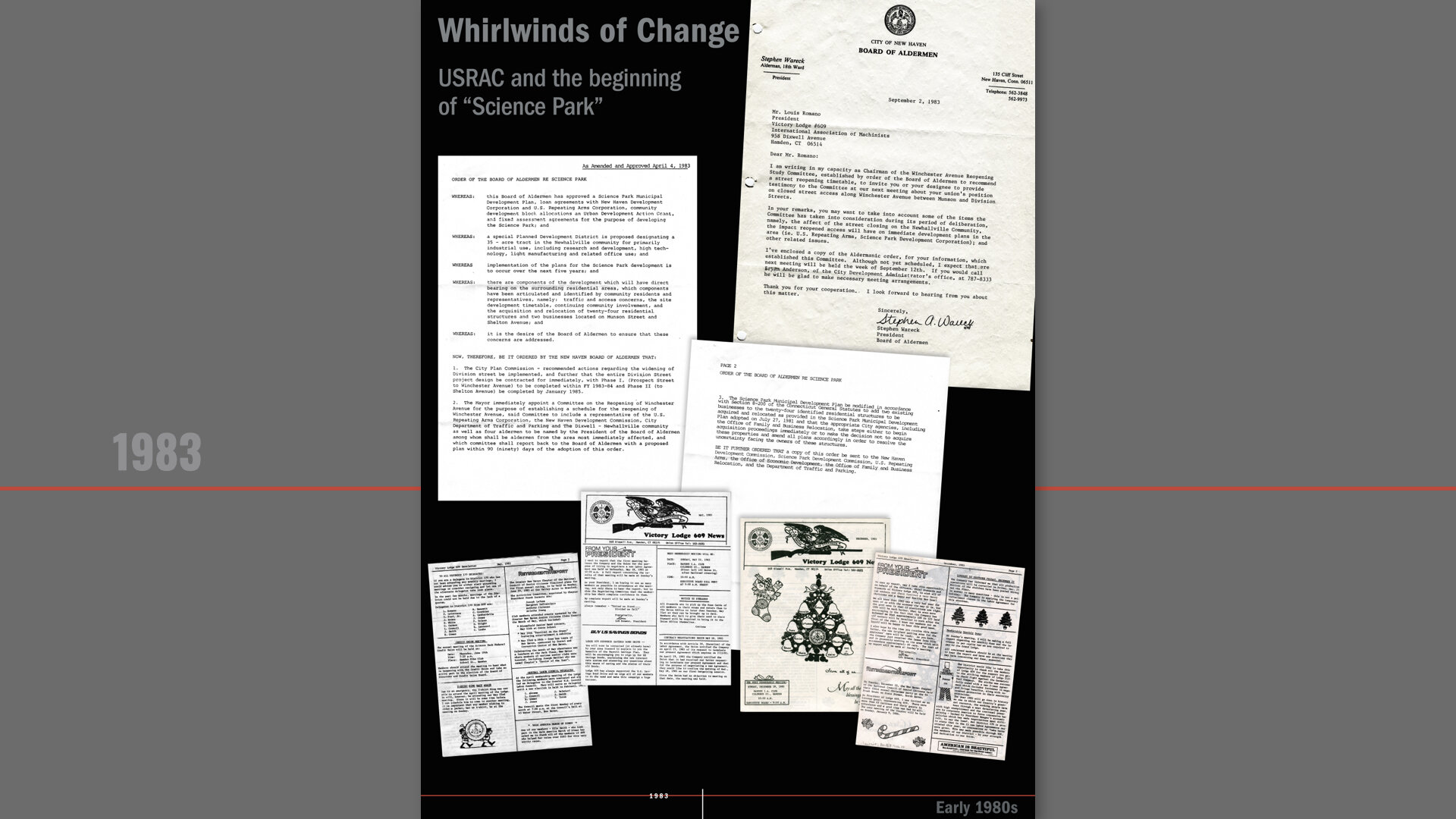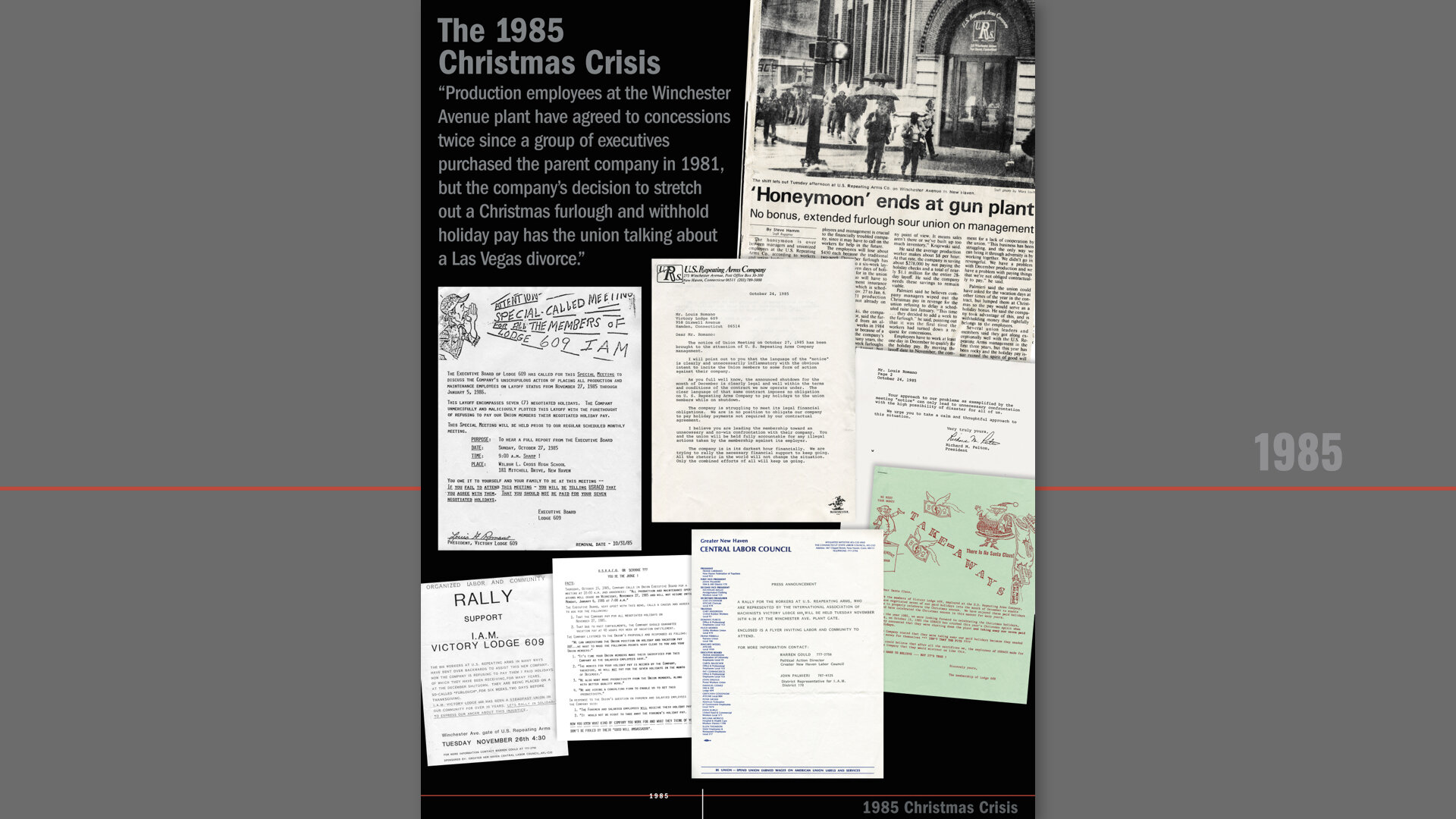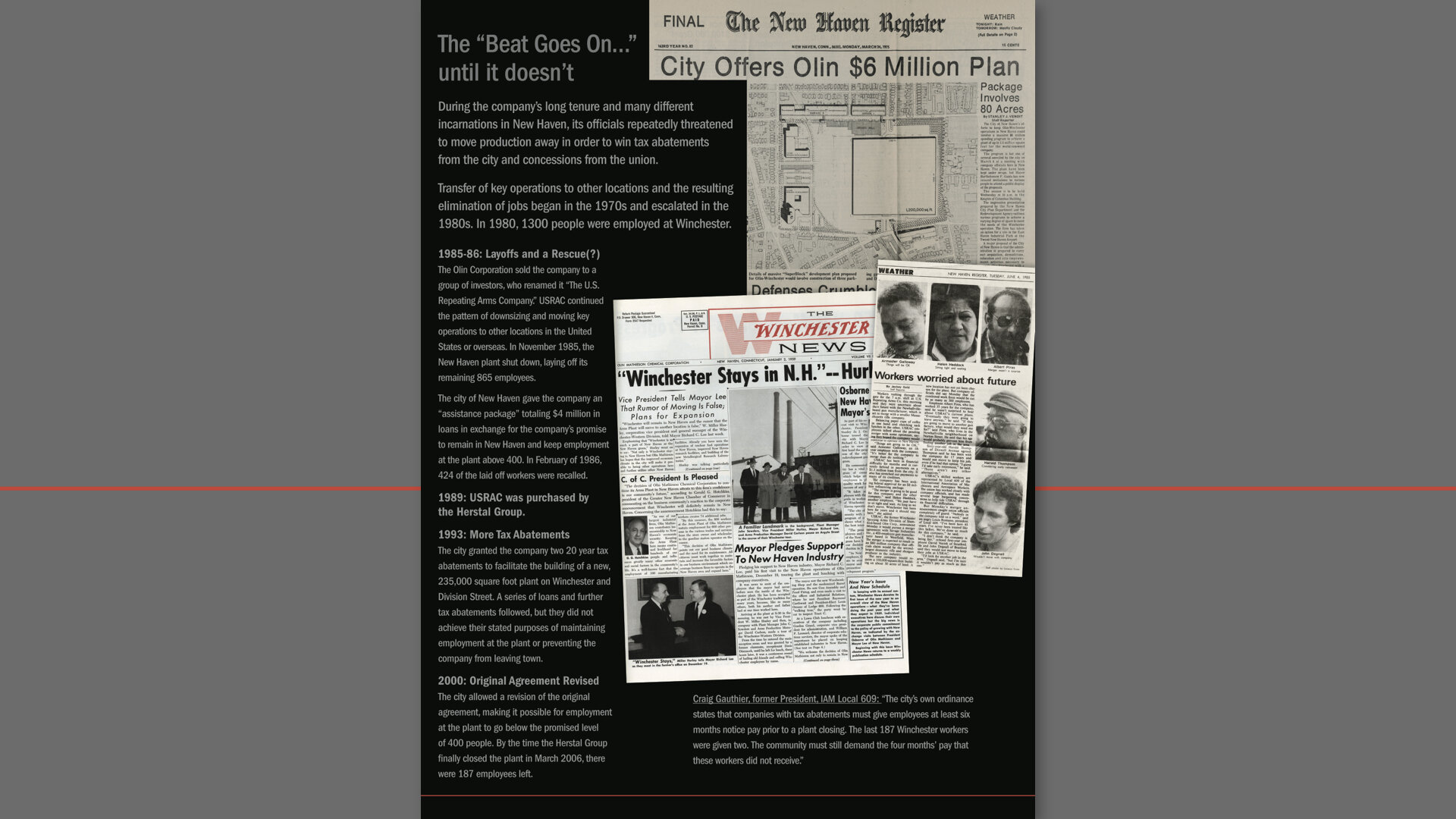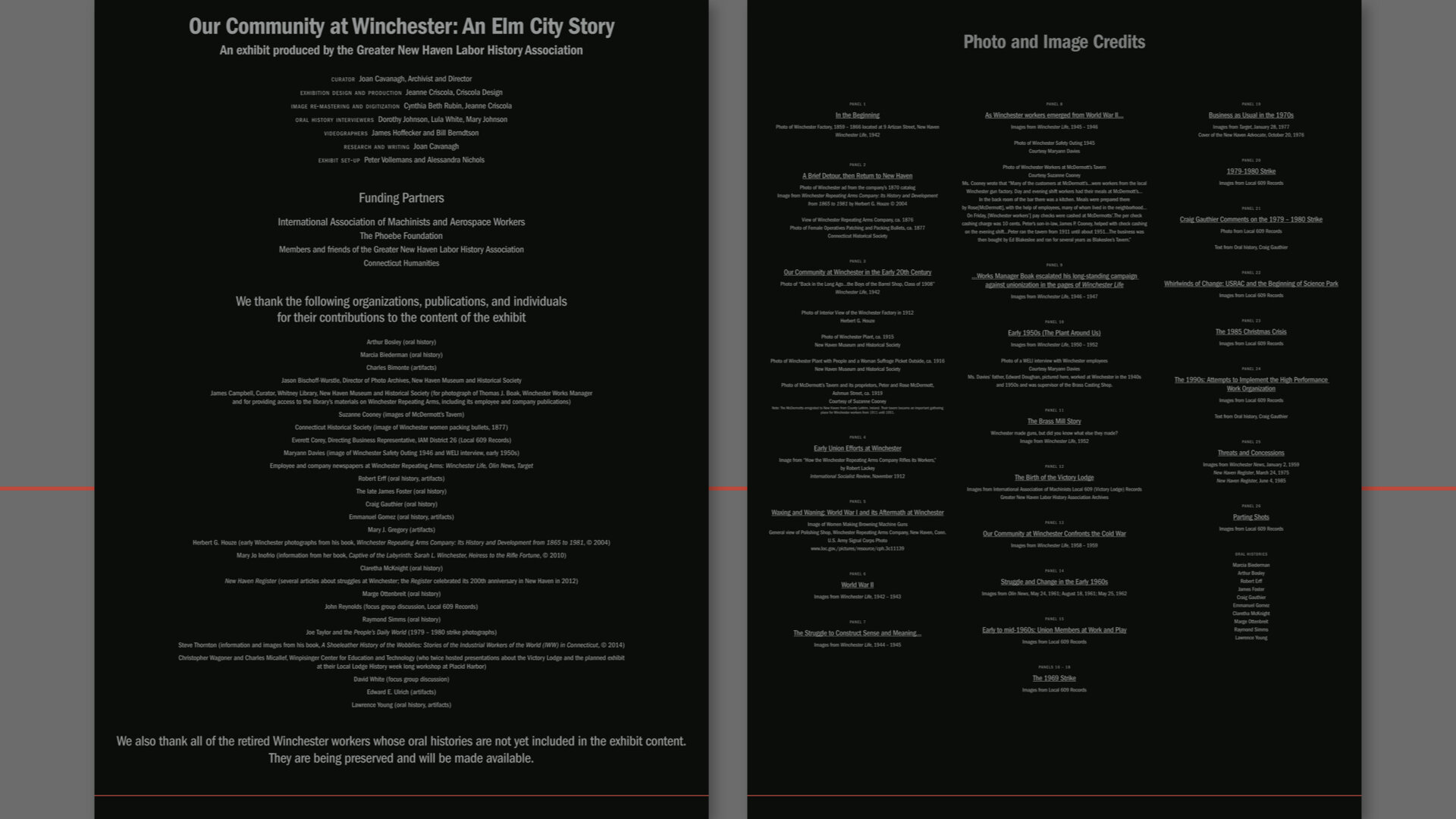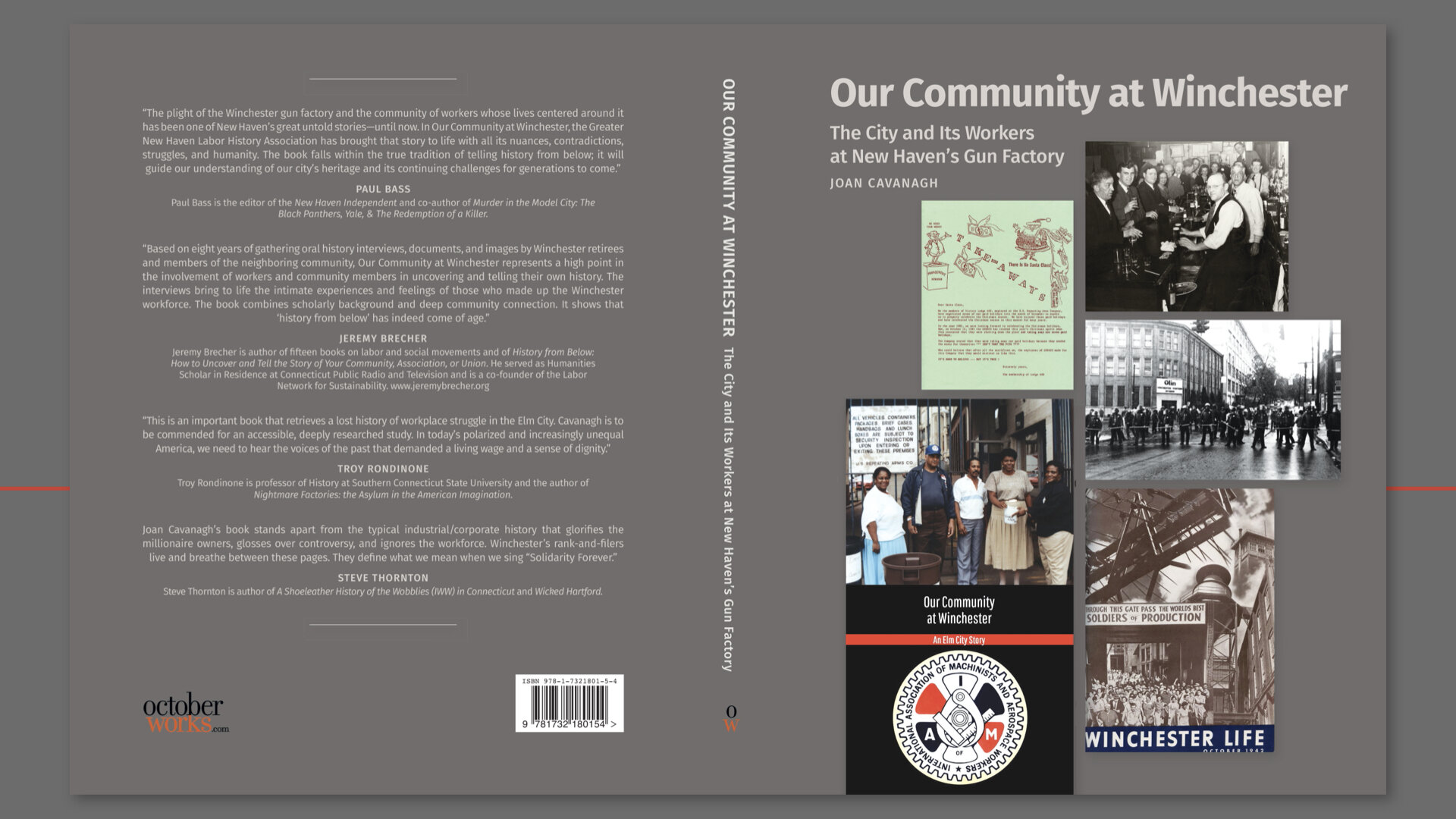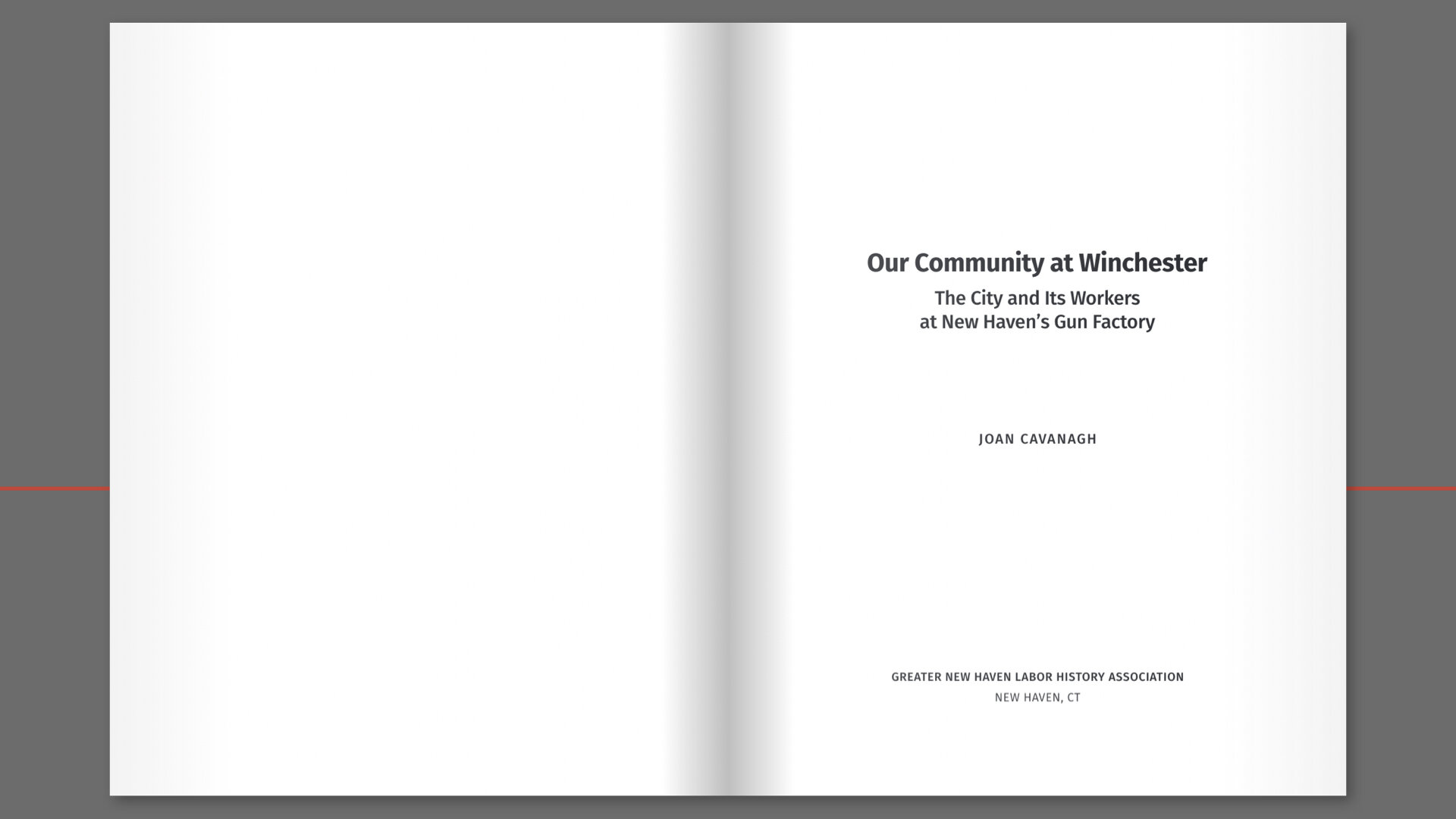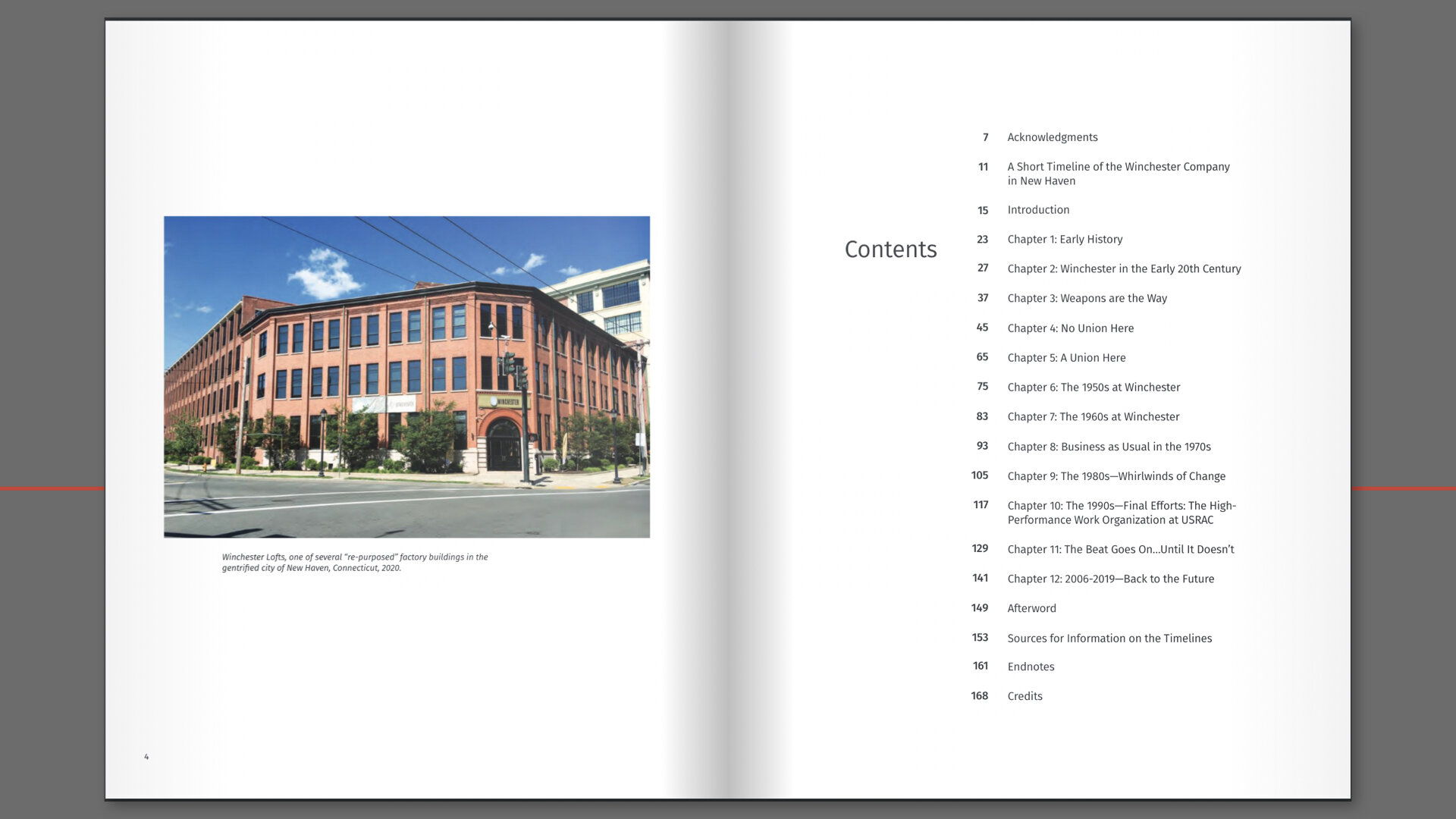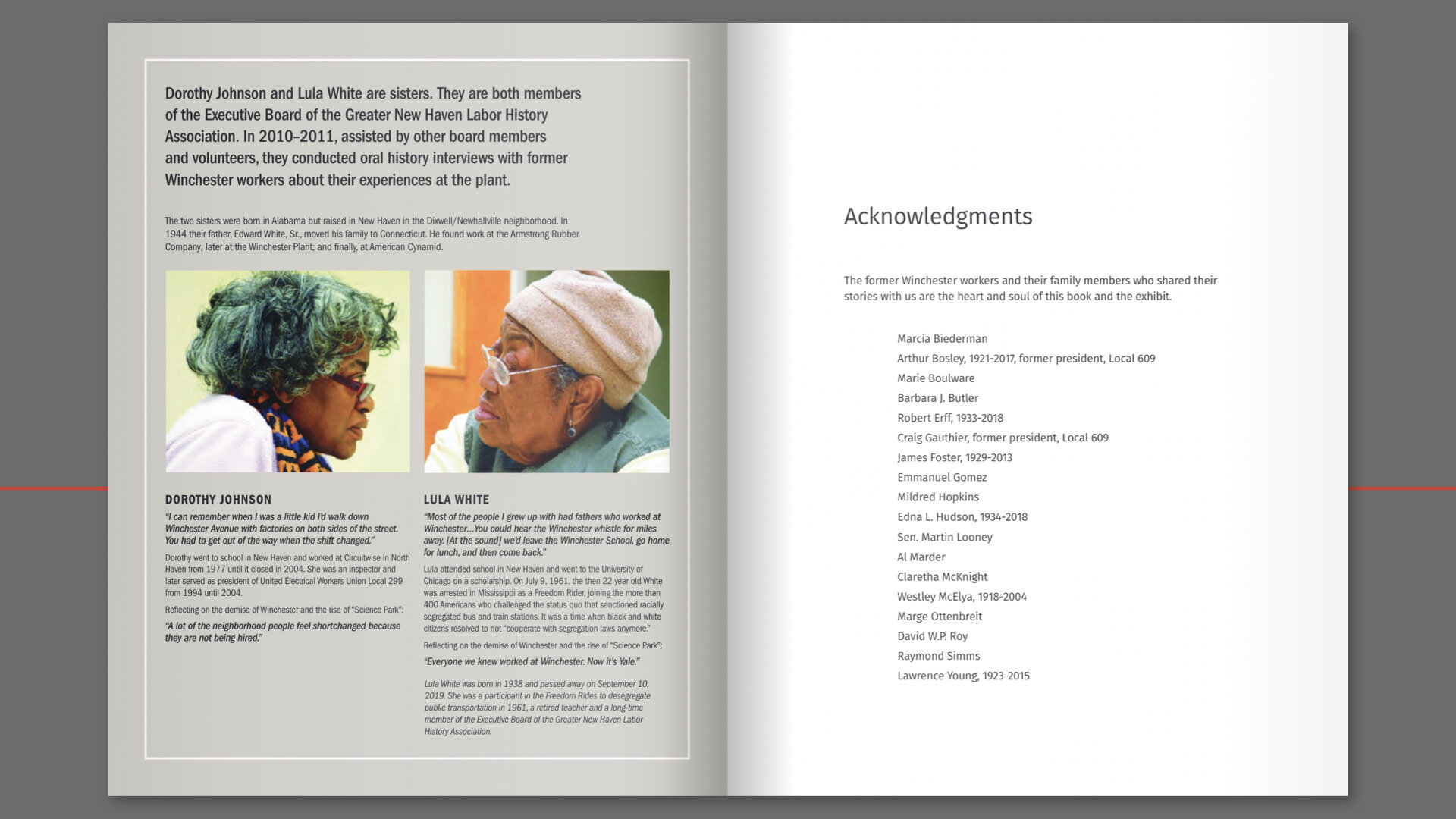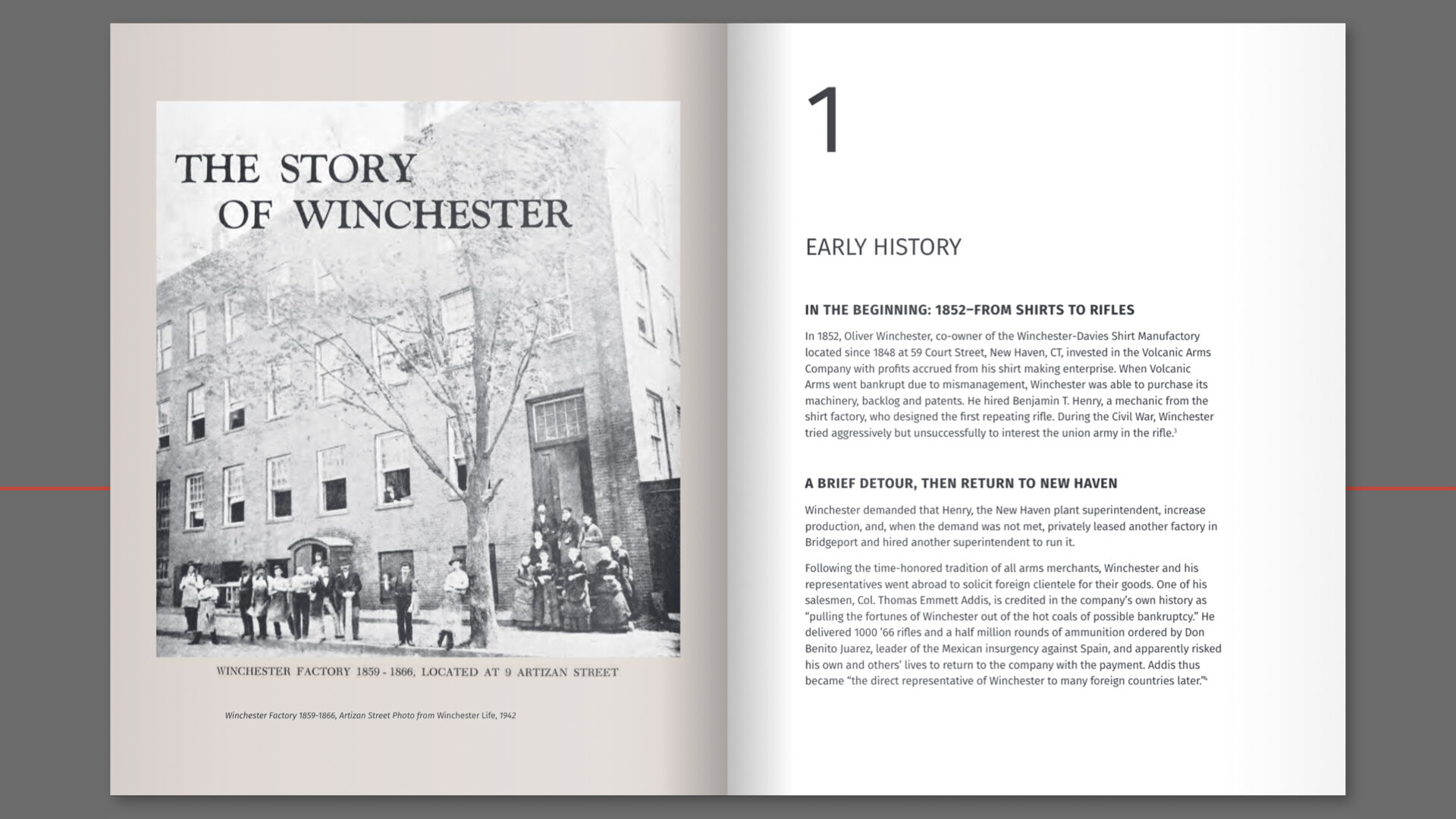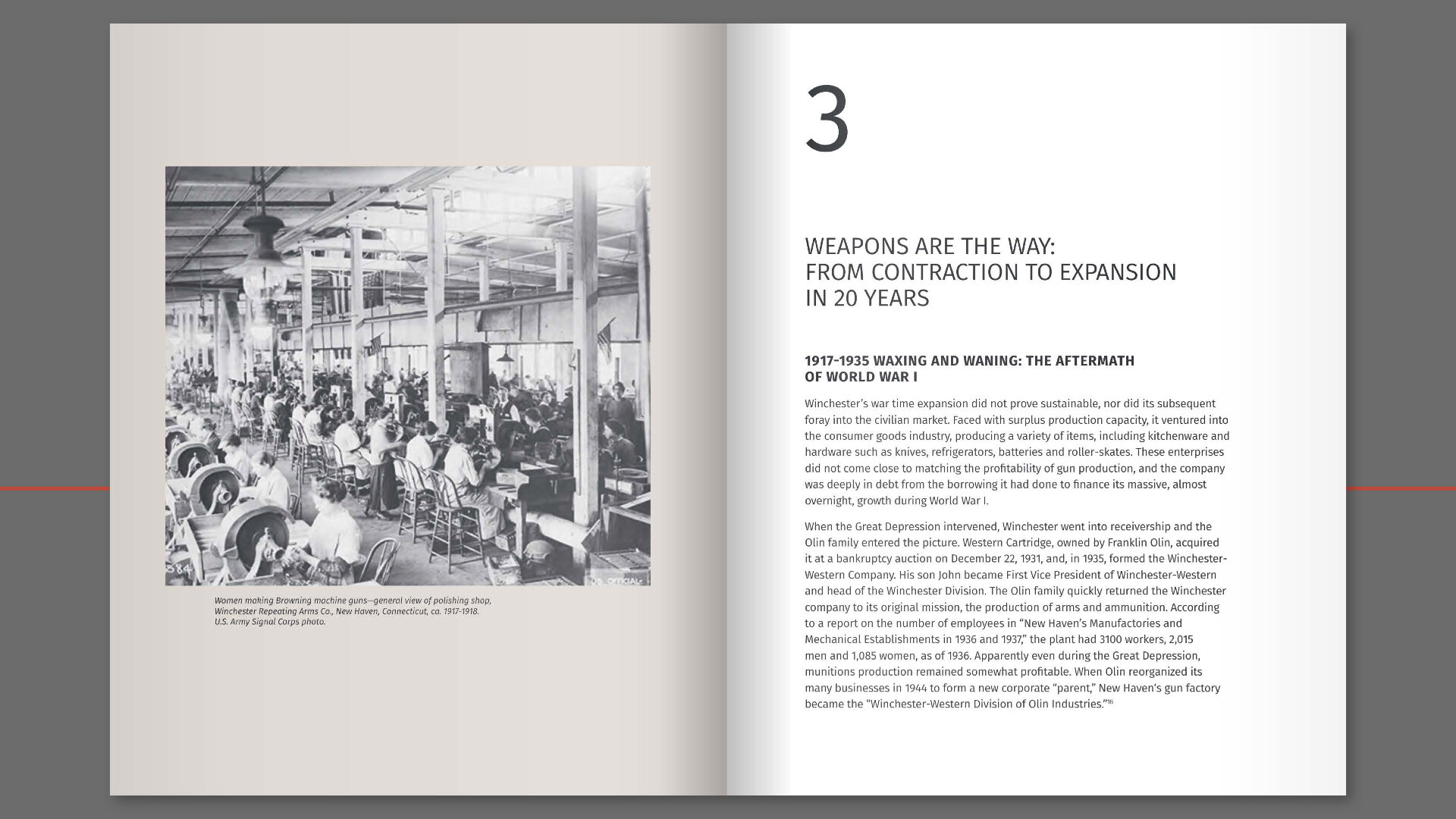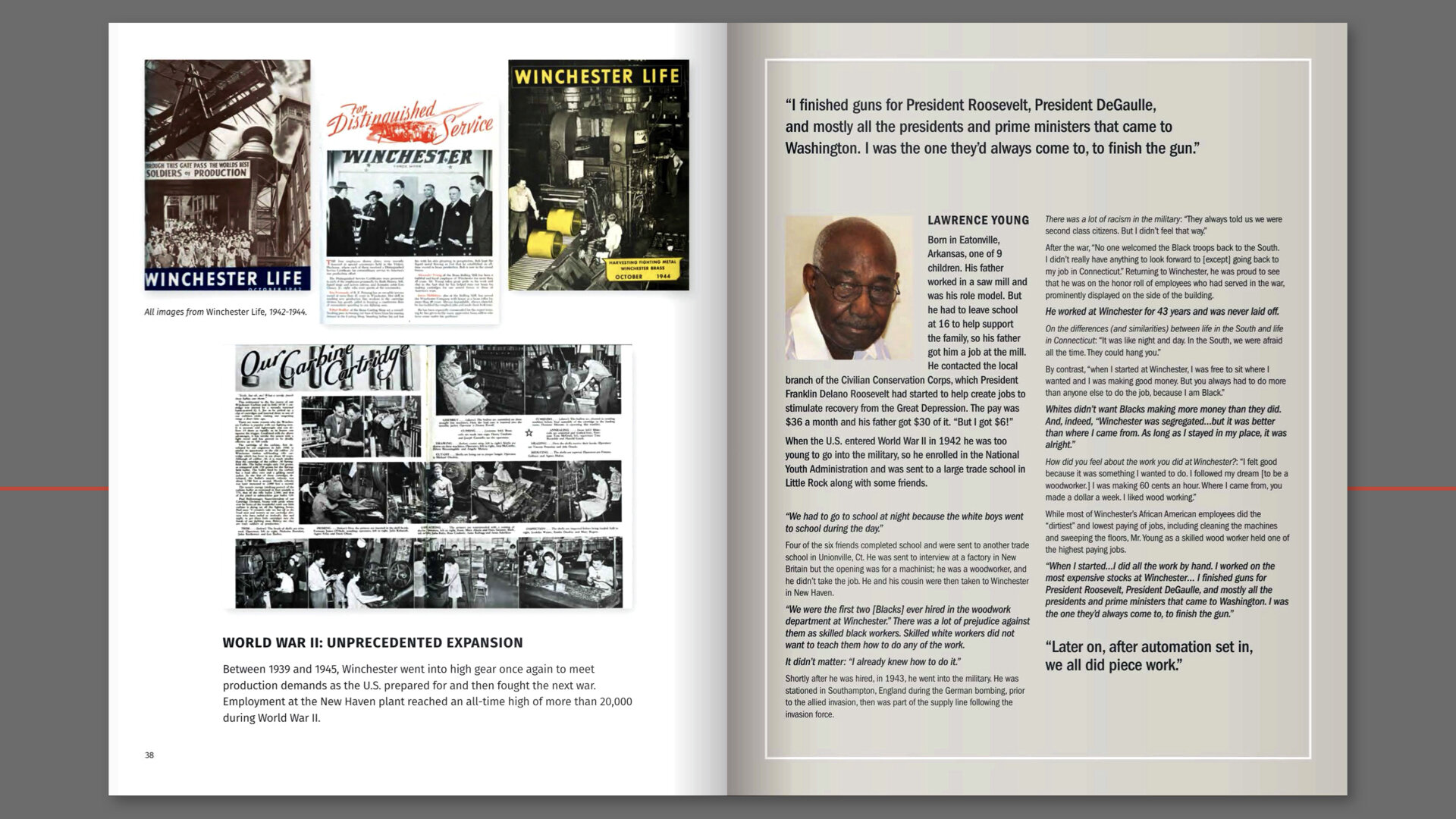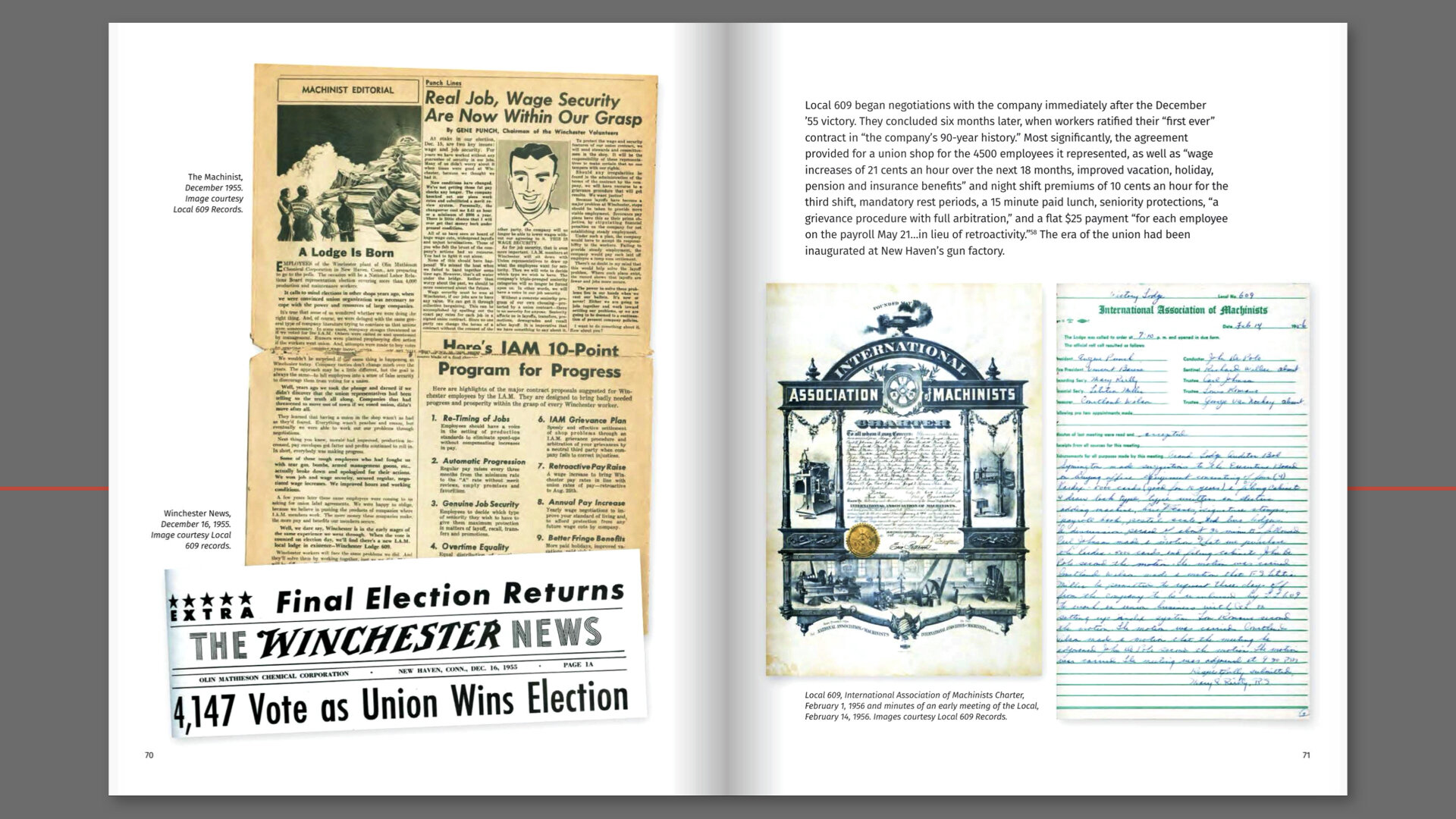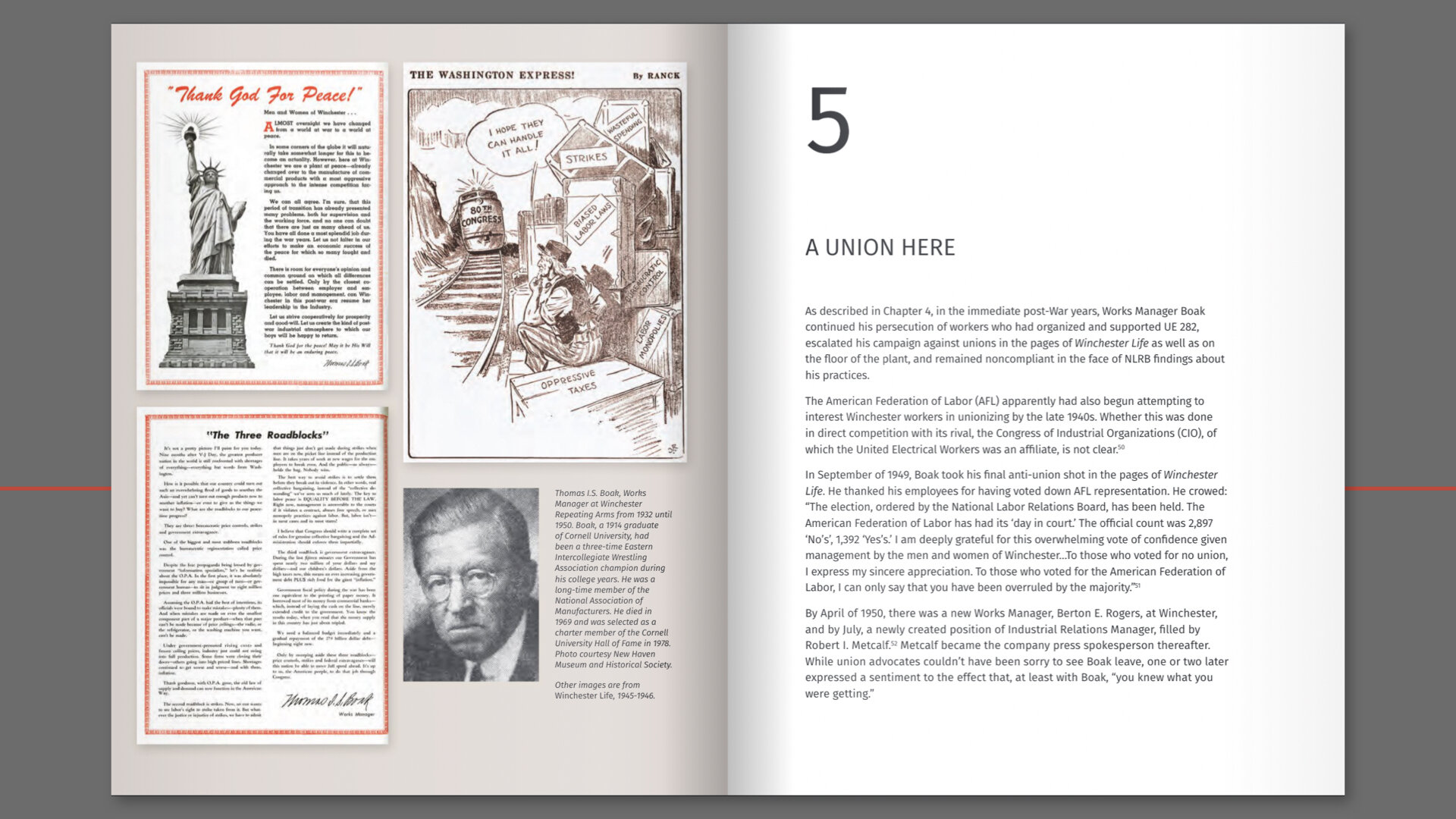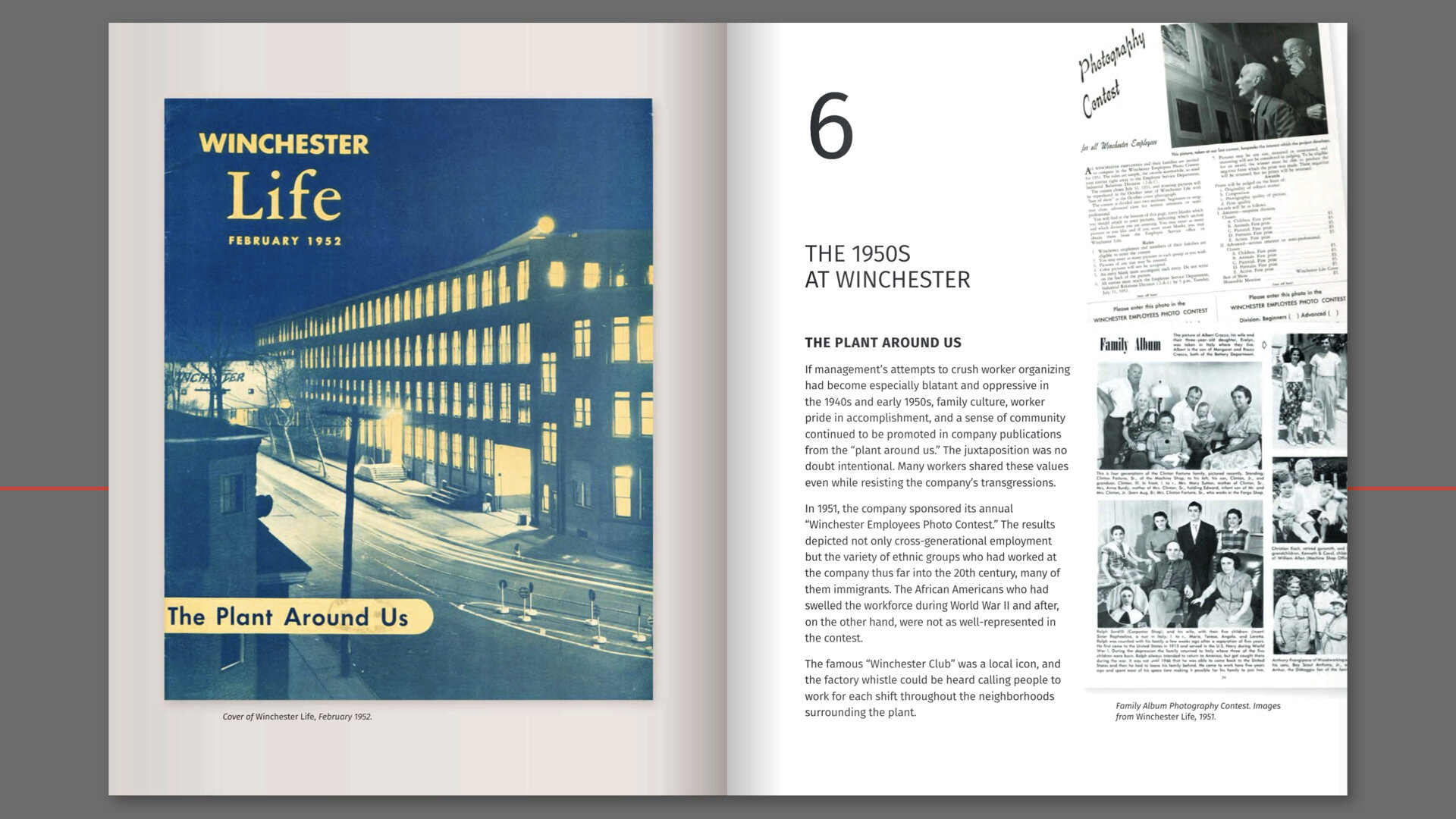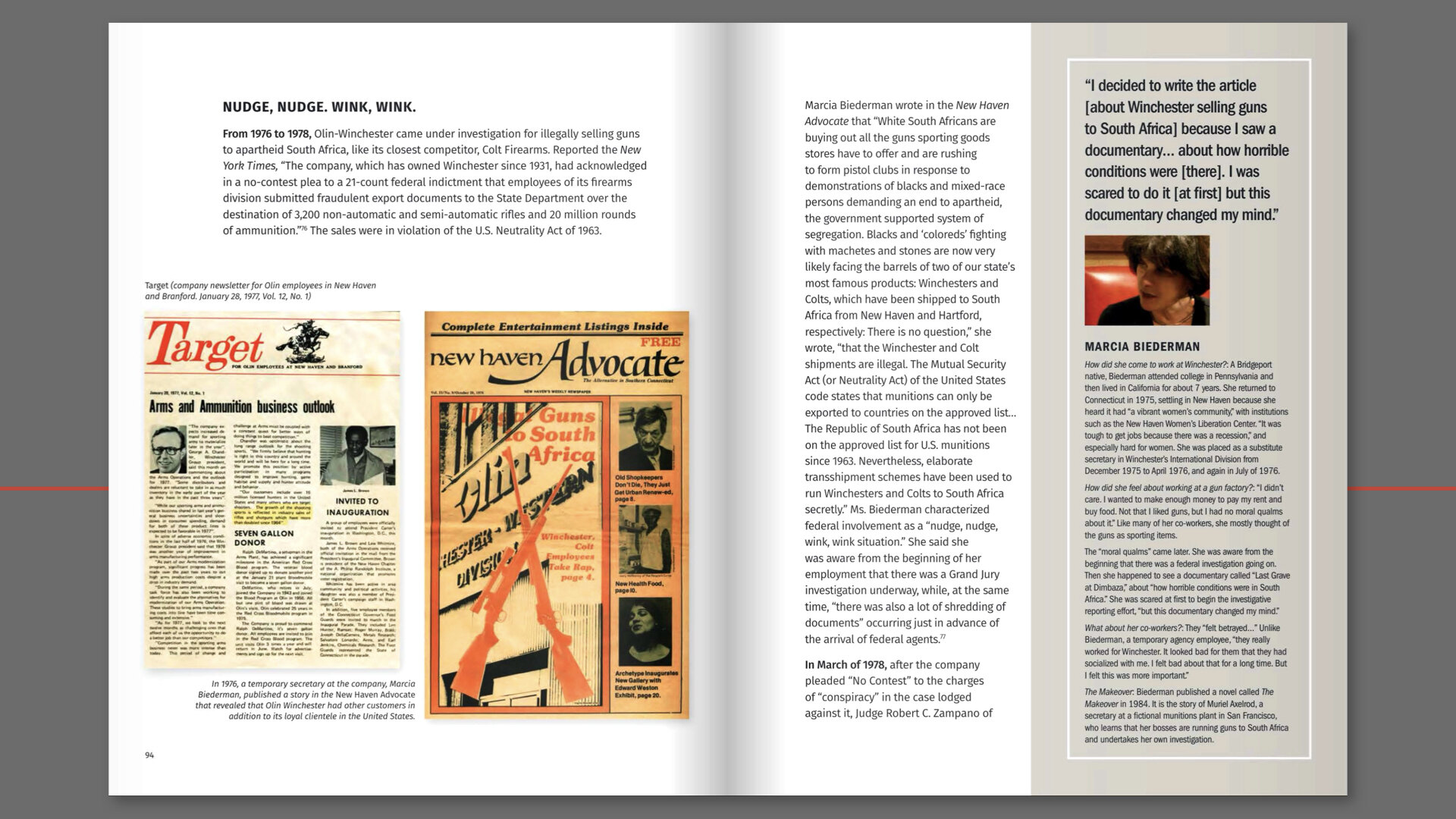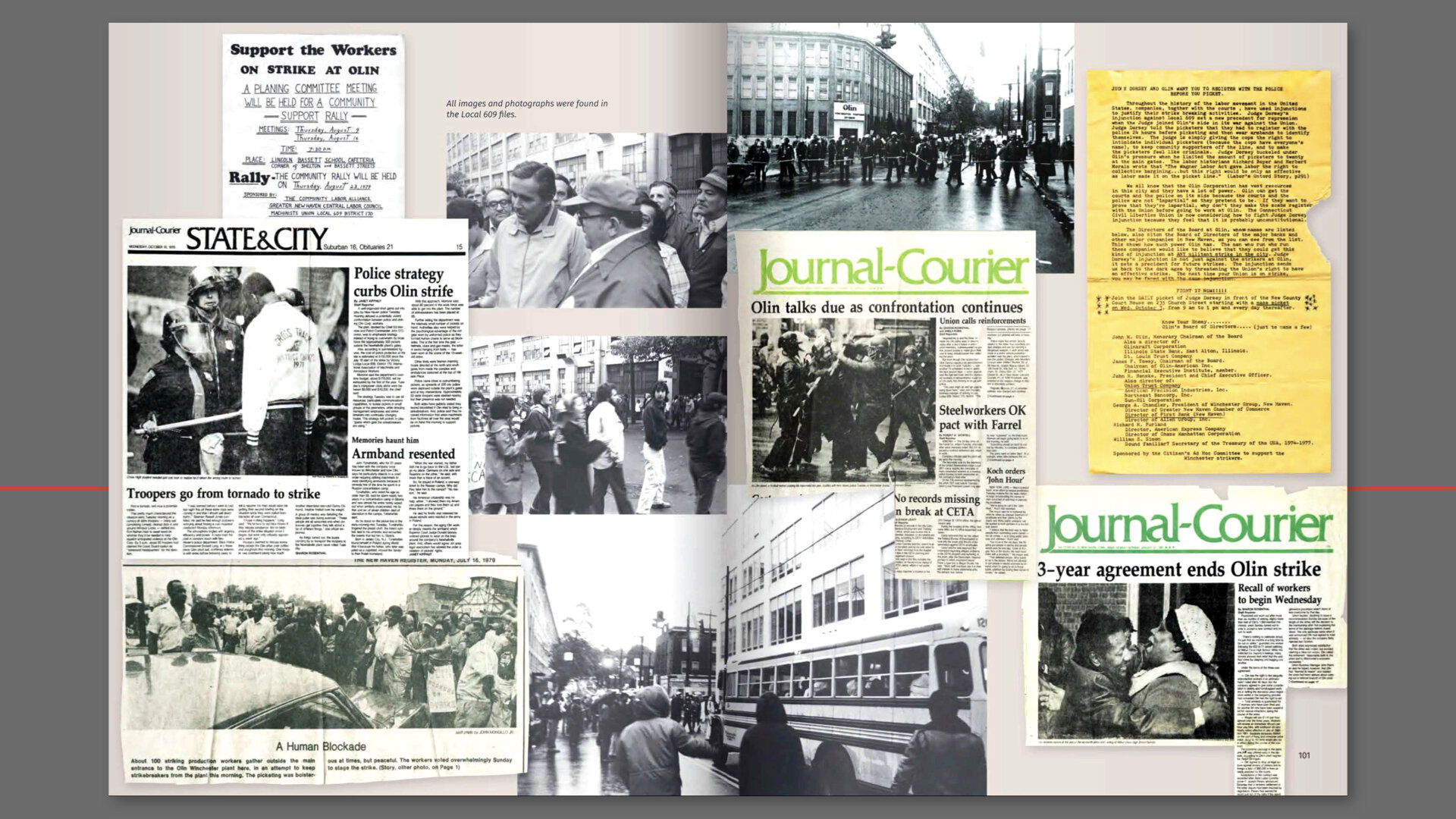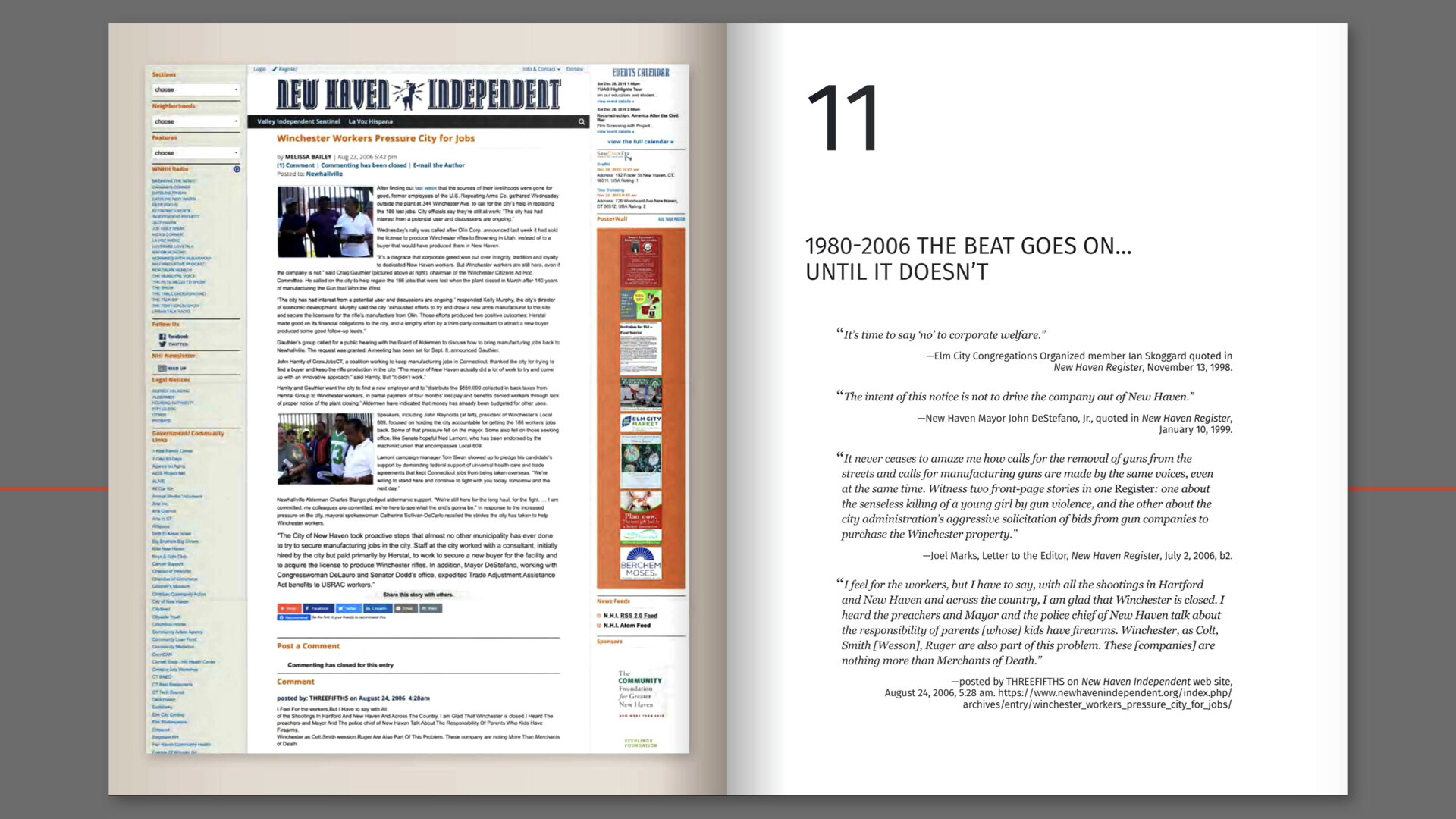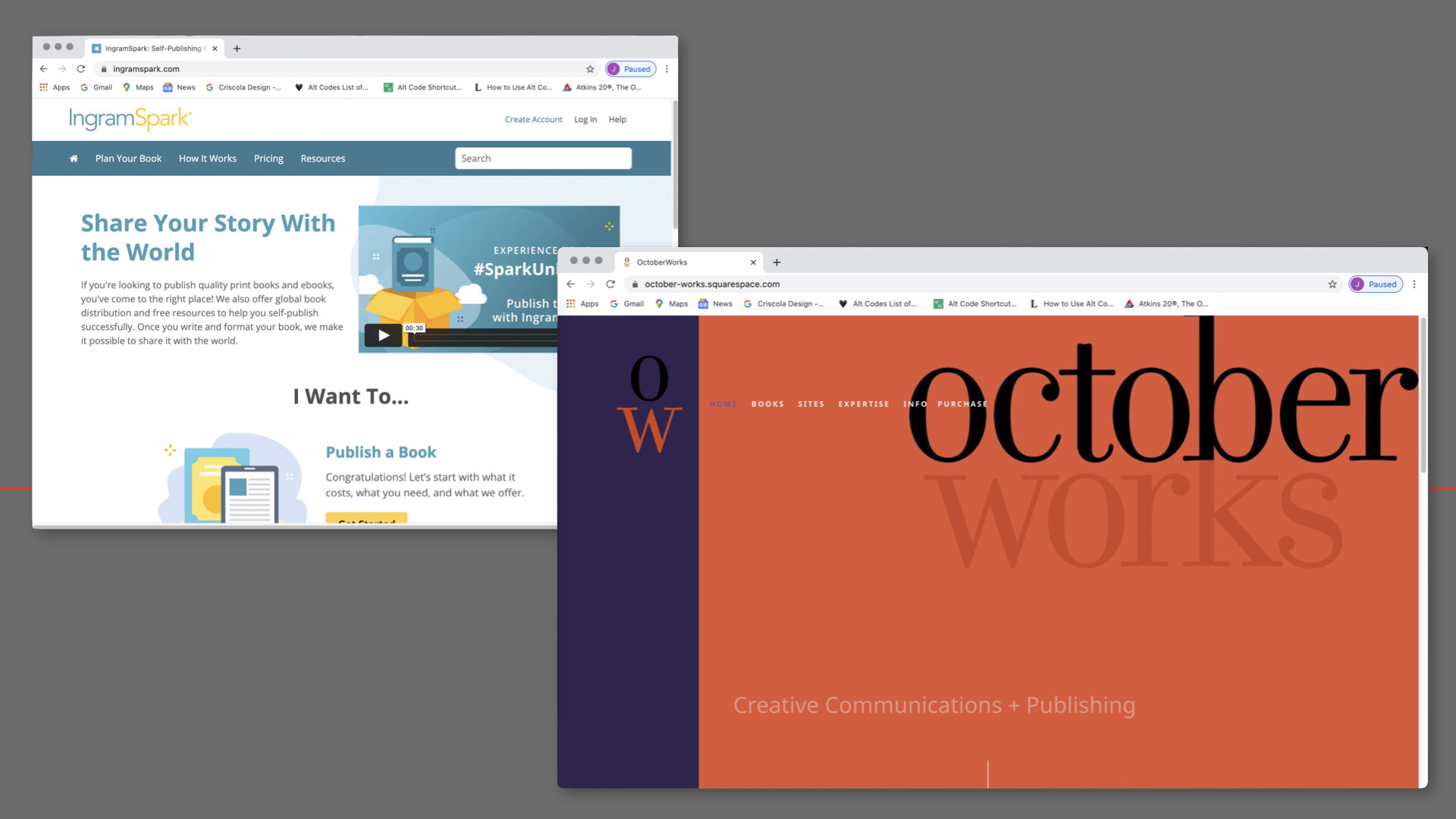Design Praxis with Archives, Ephemera & Objects
Our Community at Winchester: The City and Its Workers at New Haven’s Gun Factory
Yale Public Humanities: Democracy in America, Yale University
March 30, 2021
Good evening, I’m Jeanne Criscola and I want to thank the Democracy Project for inviting our team to talk with you today about this extraordinary project. It includes three versions: an exhibition, web version, and a book.
As I was preparing this presentation and trying to recall when it began, I went through my archives and found a project brief dated March of 2010. As I recall, Joan was working on grant writing while my friend and colleague, Cynthia Beth Rubin and I were flushing out the details that we had to work with. From what we knew at the time, there were photographs, newspaper clippings, flyers, and all sorts of ephemera to be digitized for the first part of the project which were to be a series of 26 exhibition panels. By 2013, the digitization, layout and production, and the manufacture of the panels were ready for exhibition. Then in 2015, the exhibit was post-produced for the web. So in between 2013 and 2015, the exhibit debuted at Gateway Community College’s Gallery. Discussions began about possible turning the exhibit into a book at the opening.
The panels you are seeing here are actually quite large at 36 x 48 inches. The challenges posed by the final size of the panels required that before we began any design or production, we needed to think through all the stages of the project and prepare a strategy and system for everyone to use and rely on. We all agreed on a naming system that would identify the object--that was easy. The naming system would allow for anyone working on the project to identify the object. At some point after the first layout were produced, a number system was employed that supported the draft layouts but in the end it was not helpful.
Once the scanning began for the design comps, we realized that the storage and sharing of the files would present a number of problems. I wanted every object to be scanned at a very large file dimension and at a very high resolution. For example, much of the ephemera was letter-size with an average type size--between 9 and 12 pt type. Scanning them at a very high resolution and larger than original size would ensure that all the ephemera would scale up in size and not lose any fidelity. When ephemera such as newspaper clippings, magazines and flyers are scanned at 1200 pixels per inch at 300 percent of the original size, the fine strokes within the letterforms are captured with enough information that allows a certain degree of enlargement without pixelation or loss of density. All of this meant that the scans was averaging between 500 mb to over a gigabyte each in size and took time to capture.
In some cases, the objects were larger than the scan bed and needed to be scanned in pieces and then reassembled in Photoshop.
Readying the art was the next step. Many of the objects needed to be handled carefully as they were old and fragile. Every time a wrinkle or dog-eared corner appears during scanning, it would need to be repaired digitally.
Once the scanning, naming and organizing stage is done, many of the digitized files were repaired in areas where the paper had worn away or was creased, printing blemishes were removed, backgrounds built out where needed, silhouetting some ephemera to reveal its shape and edges, and straightening or squaring up where needed to make the scan look as close to an original as possible. Toning the color adjusting follows.
When working with ephemera and archival content there can be hours of repair work on some originals and not much on others.
Next steps were the design, layout and production, then review, editing, and proofing. Overall the final reproductions of the panels were quite impressive and there was not one noticeable pixel or blemish that had been missed.
The project’s next iteration was a website. The project needed to be archived and rendered in an organized fashion for David Cirella who was building out the screen version of the exhibit panels. So now all the super sized files needed to be downsized for web. That meant every file had to be opened, and then converted from CMYK color to RGB and then reduced to 72 pixels per inch.
There was quite a bit of time that went by during which the archived files played musical chairs on various storage drives in my studio. They took up almost 50 gigs of space. And if you have ever had a hard drive fail unexpectedly of course, you know that when a request for a project’s files comes up, anxiety swells until you locate the files and get them transferred to a workable local drive or computer.
I began the book design and layout late in 2019 and by October of 2020 it was produced, finalized, proofed and ready to publish. By then we had determined to use a print-on-demand vendor and I chose to use IngramSpark and publish it through an imprint I am involved with called OctoberWorks. This is a website where you can read about the book and find ways to order it.
Projects that include ephemera have become a favorite for me and I am working on one now that includes my old portfolio of weavings.
